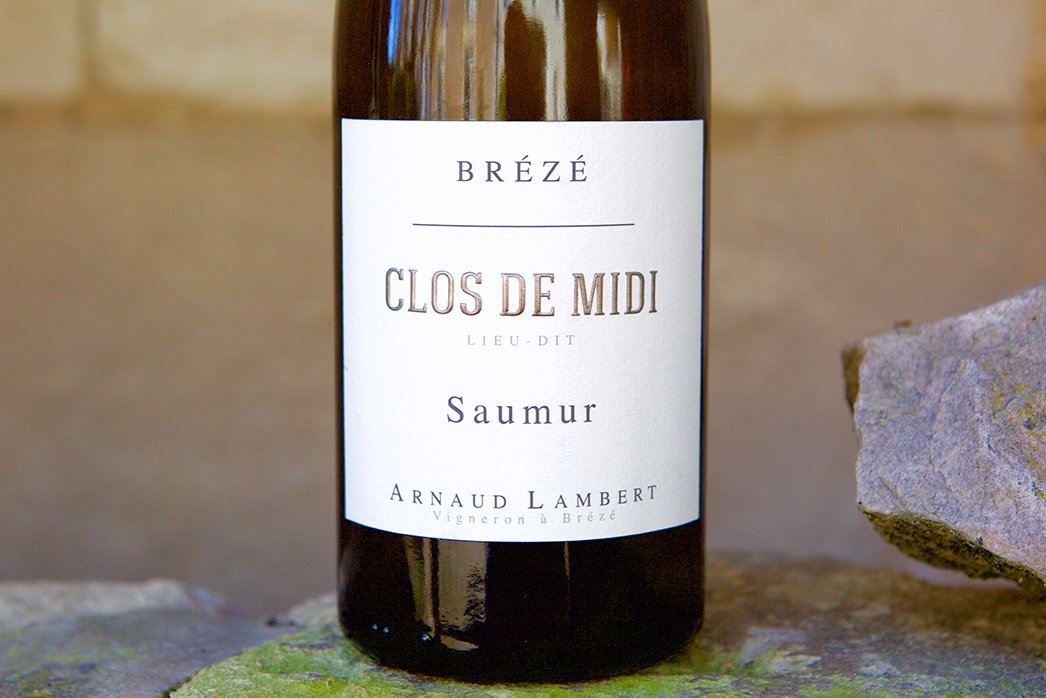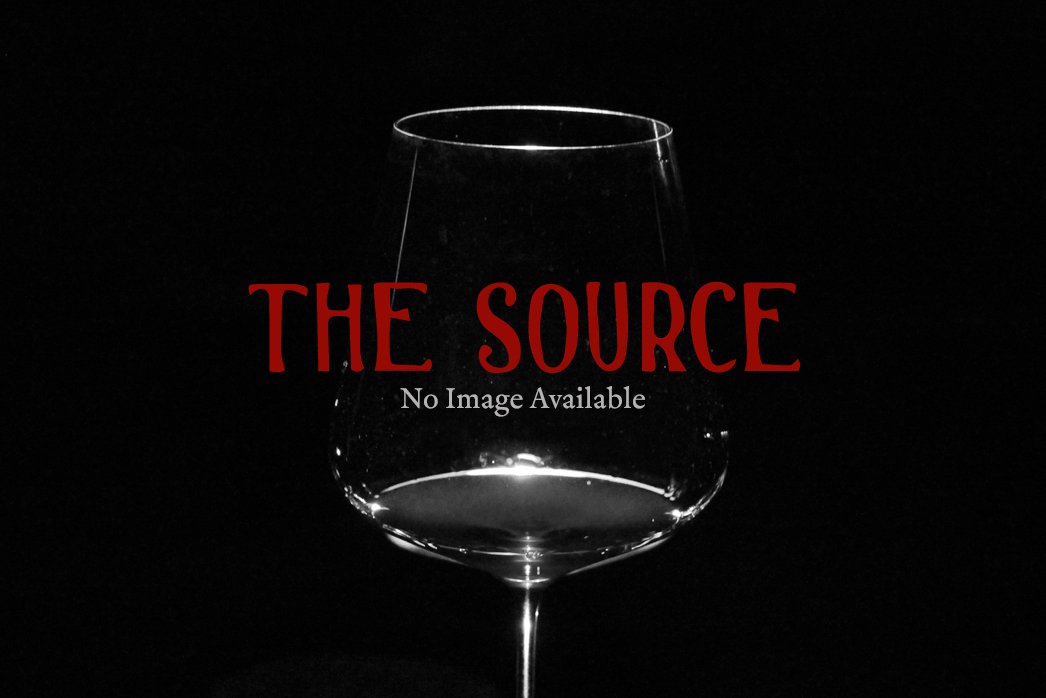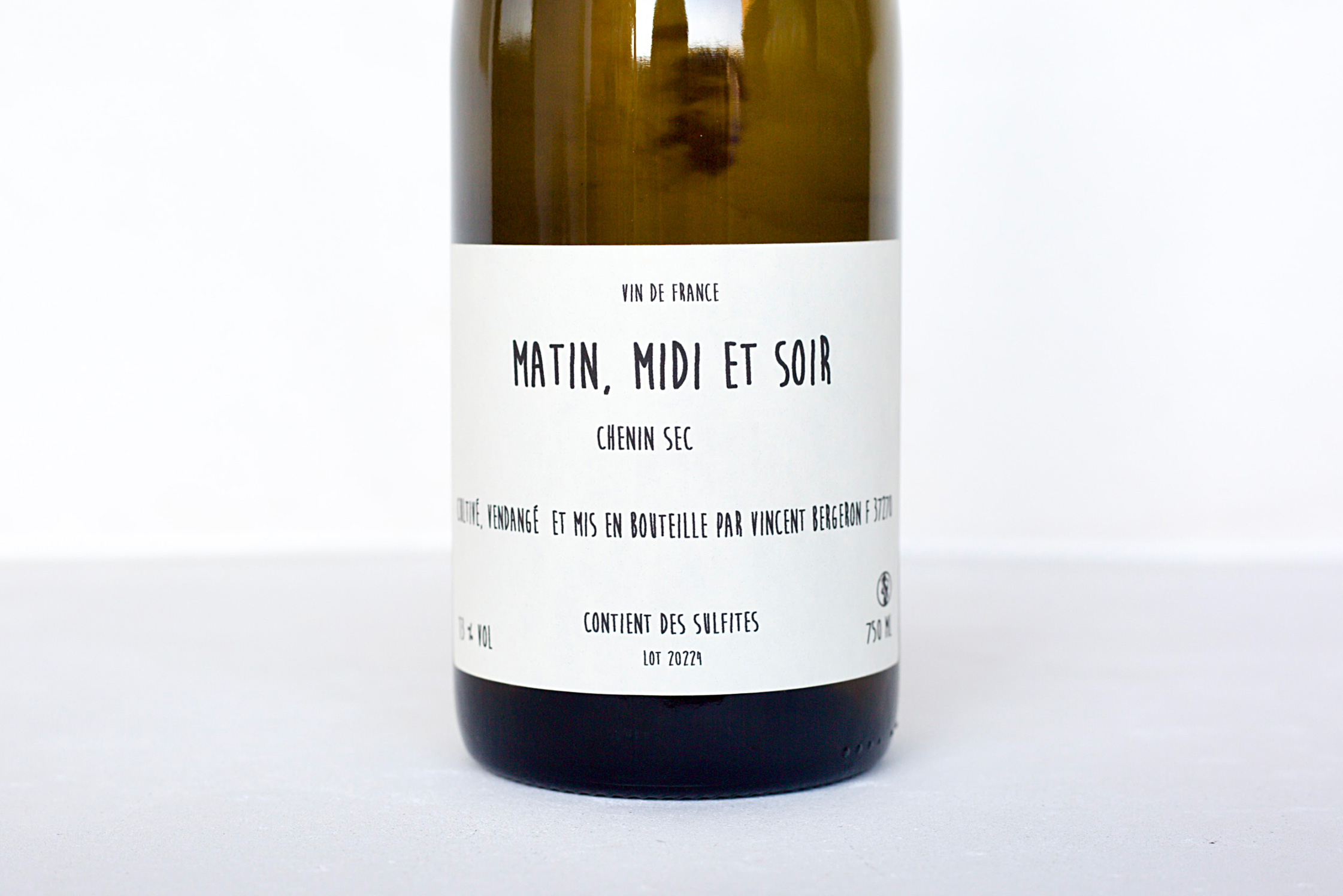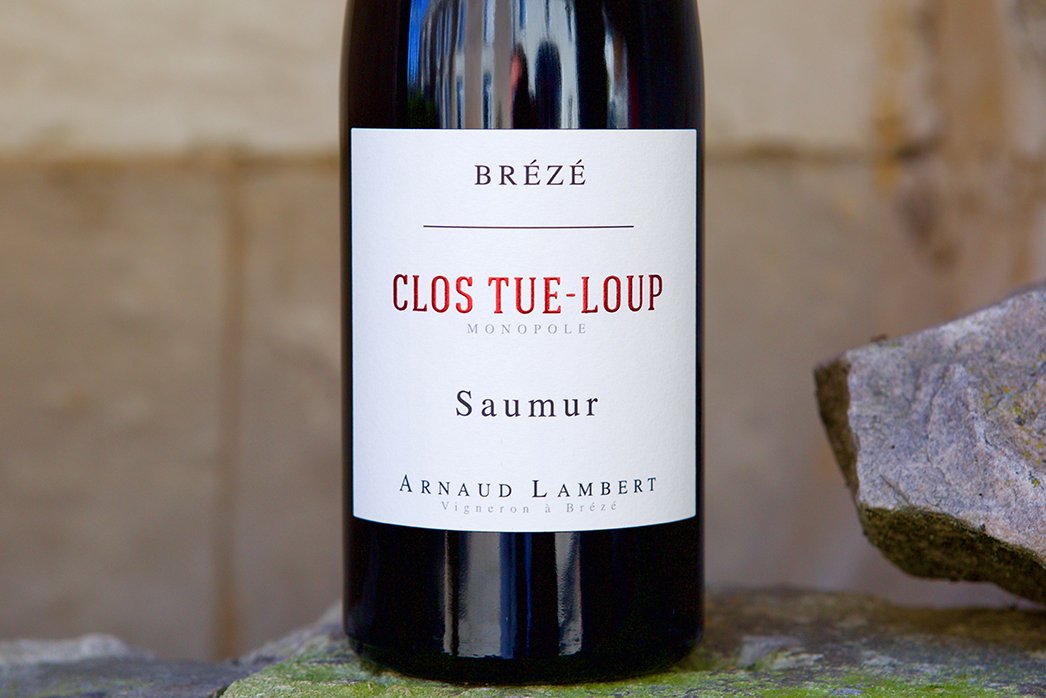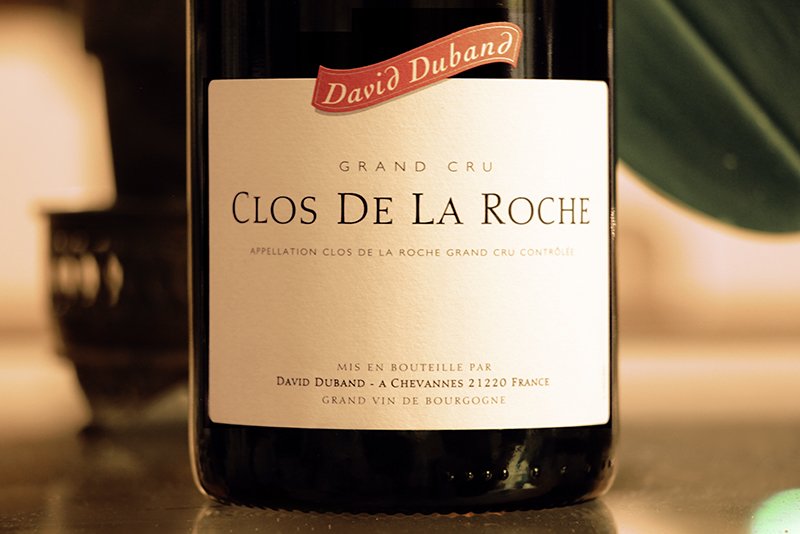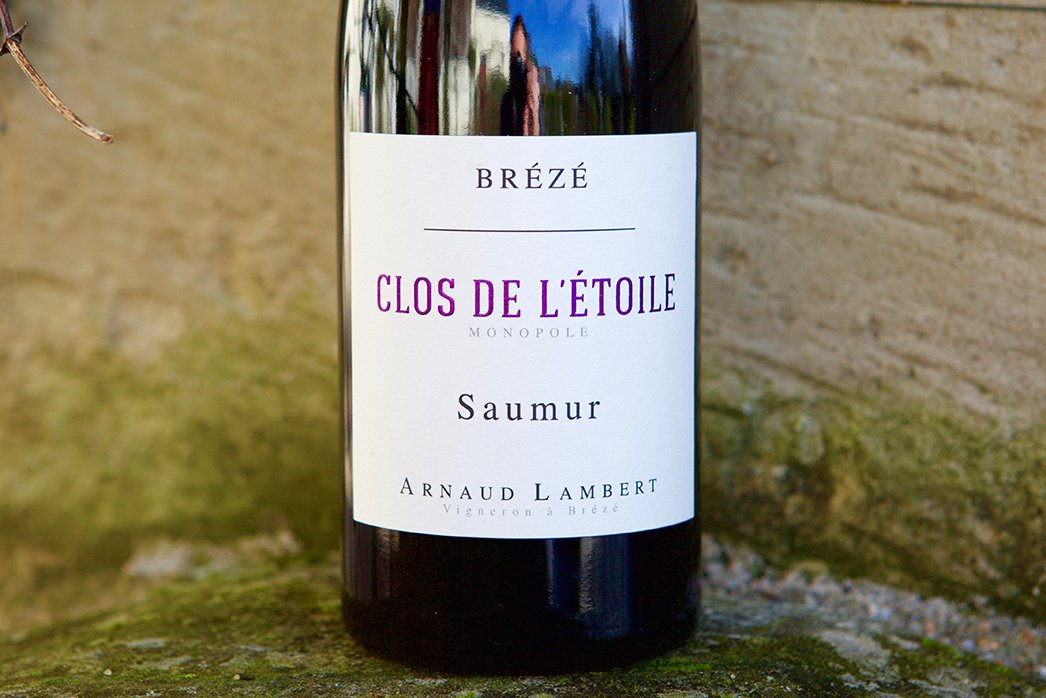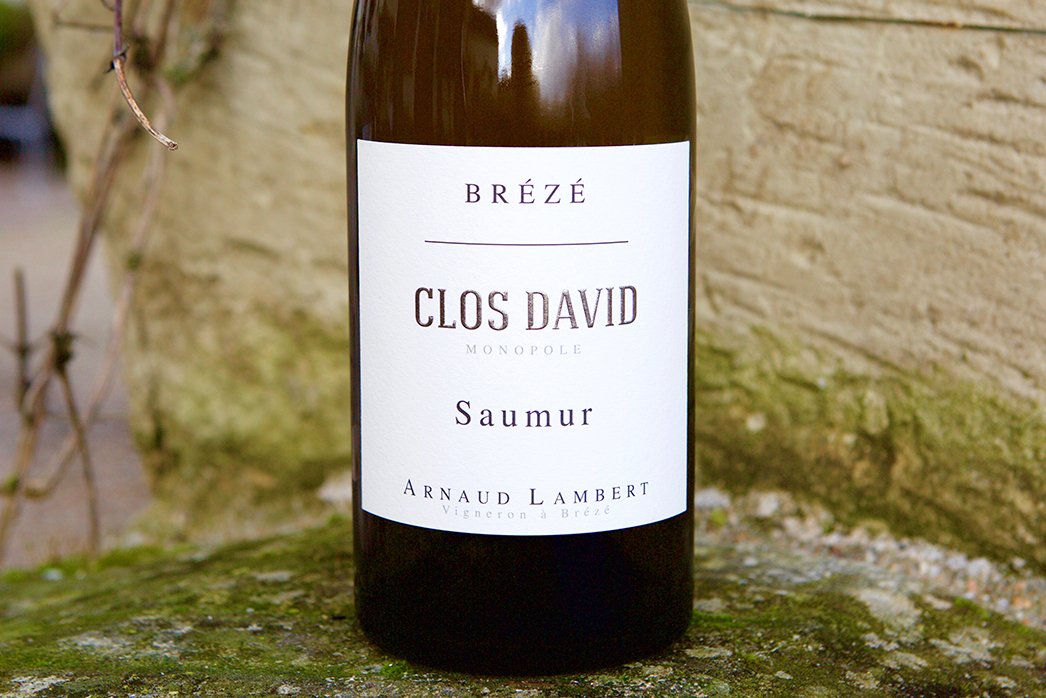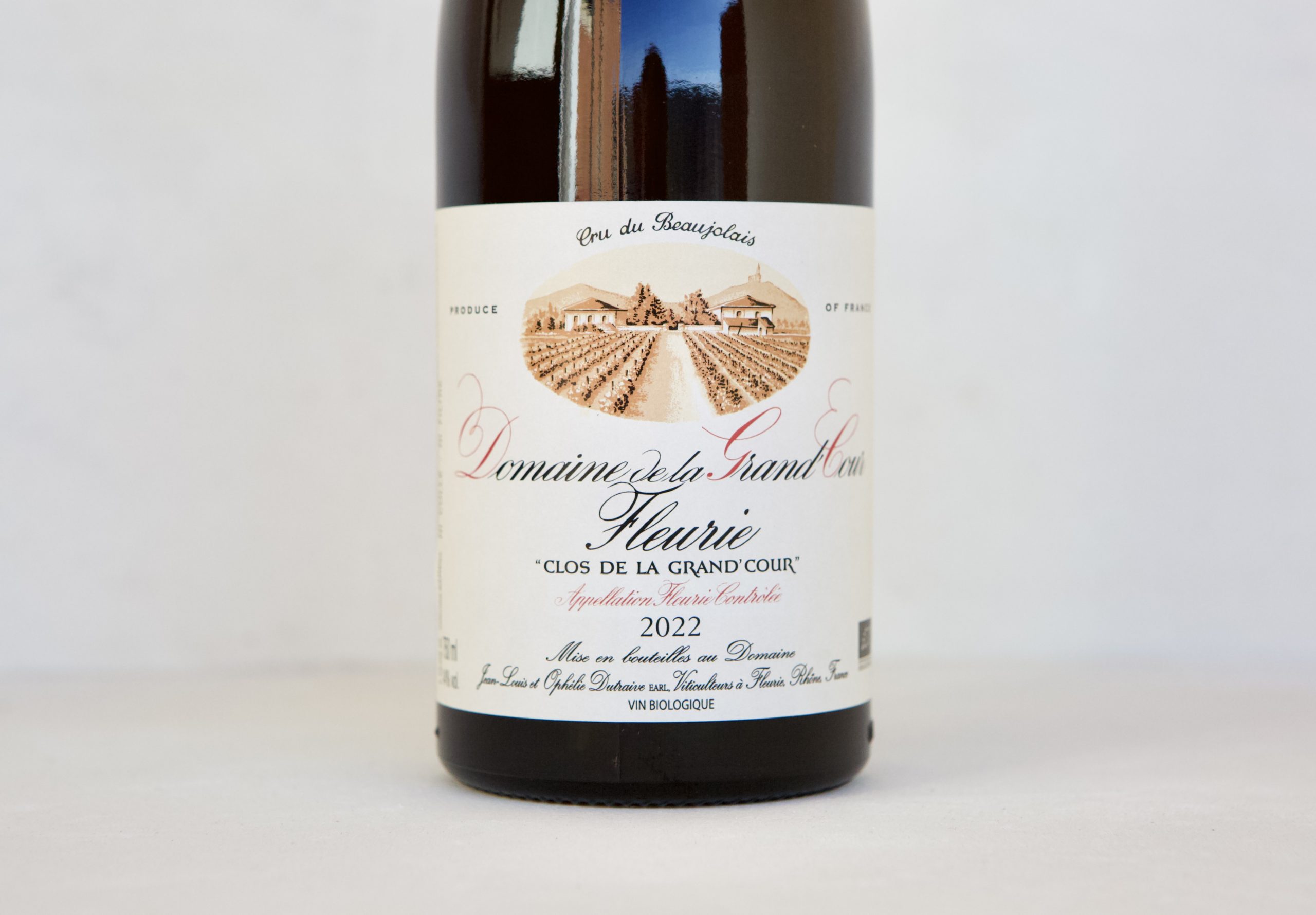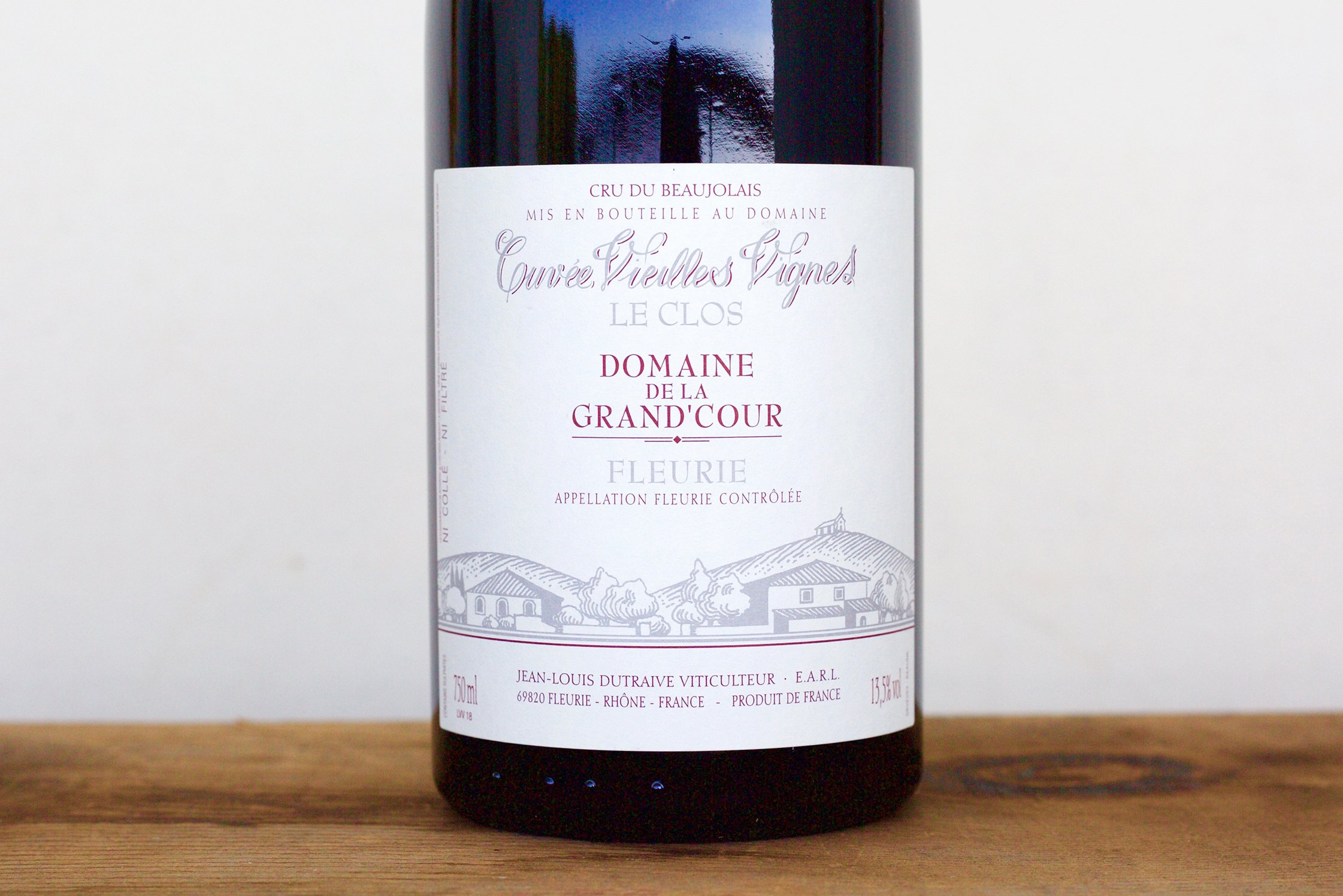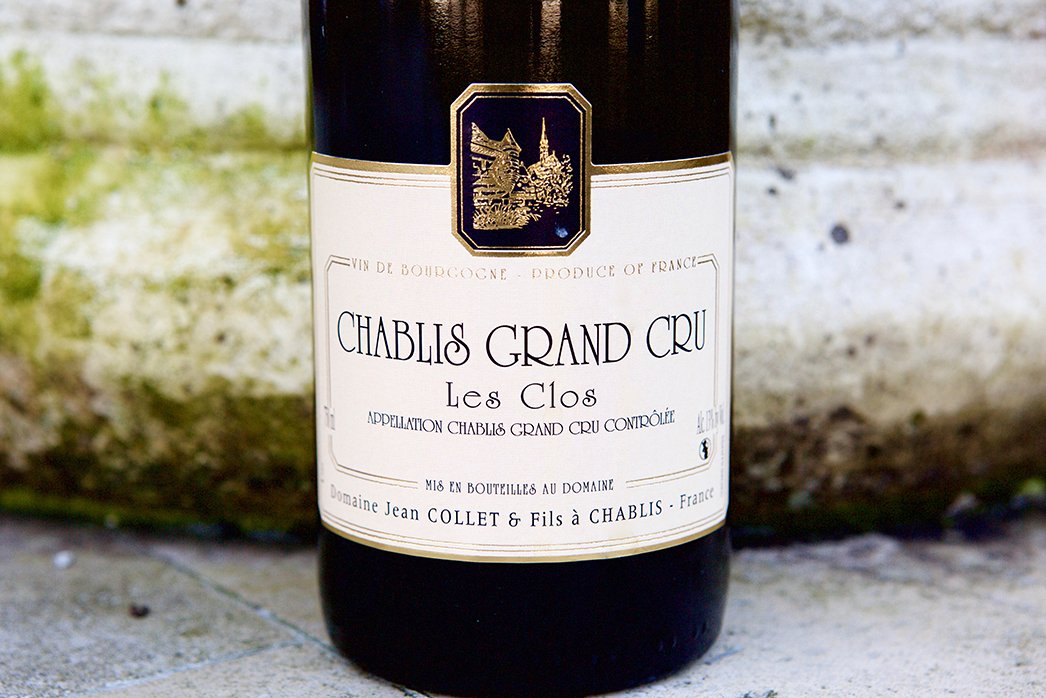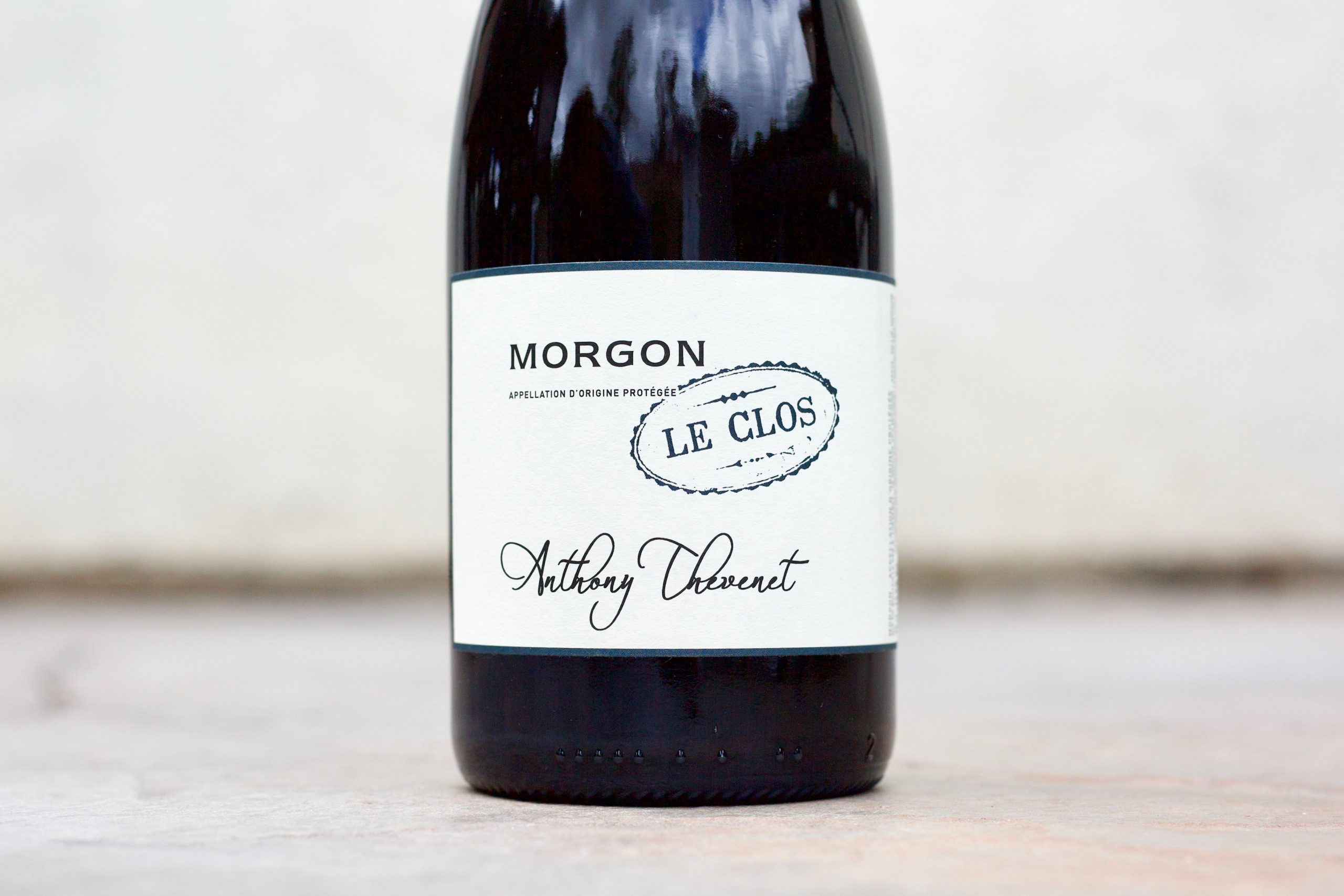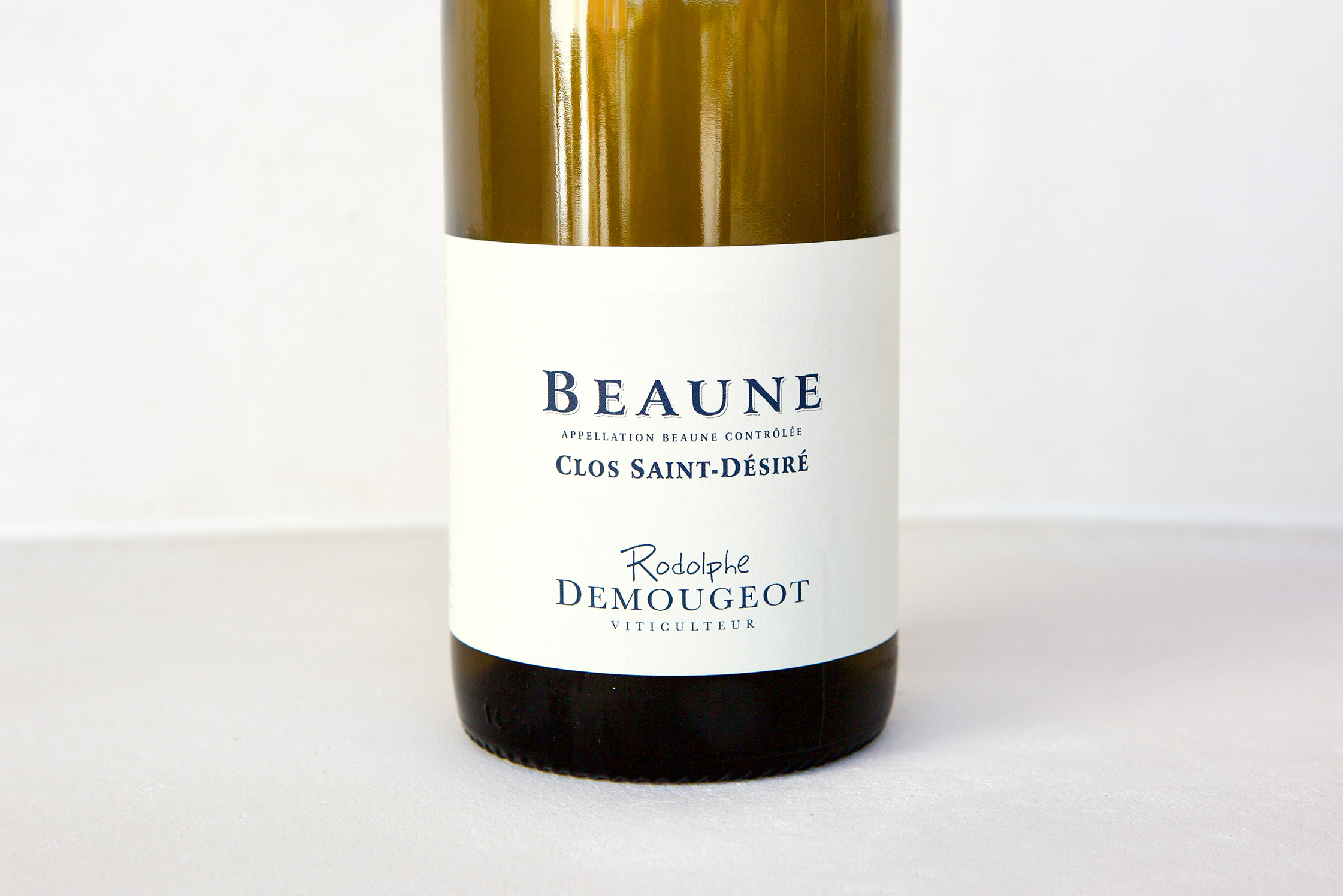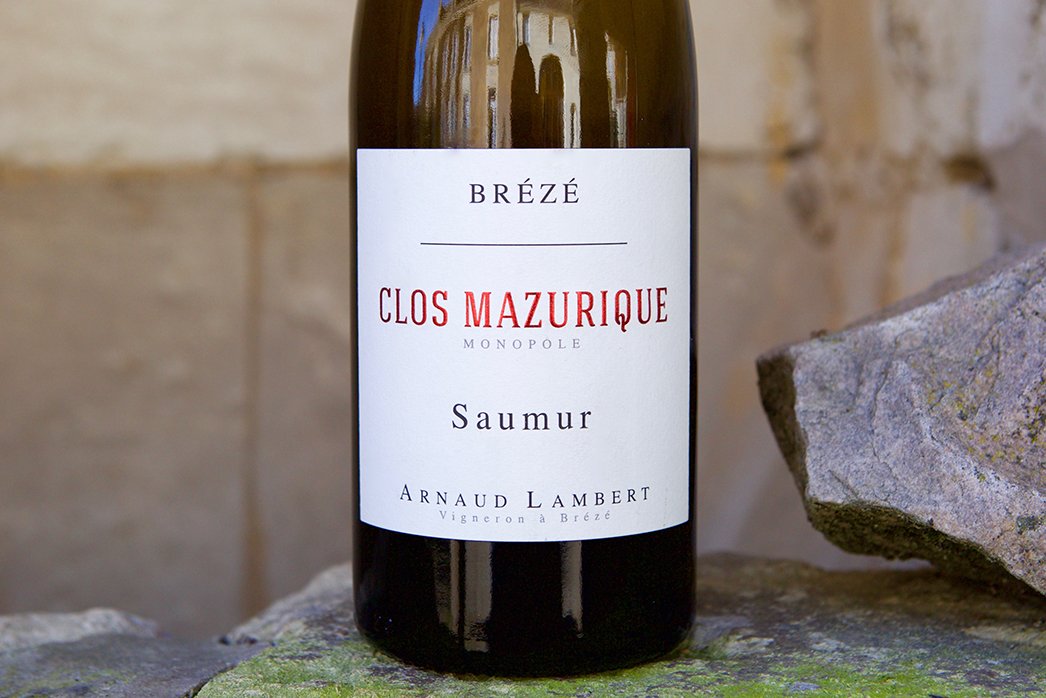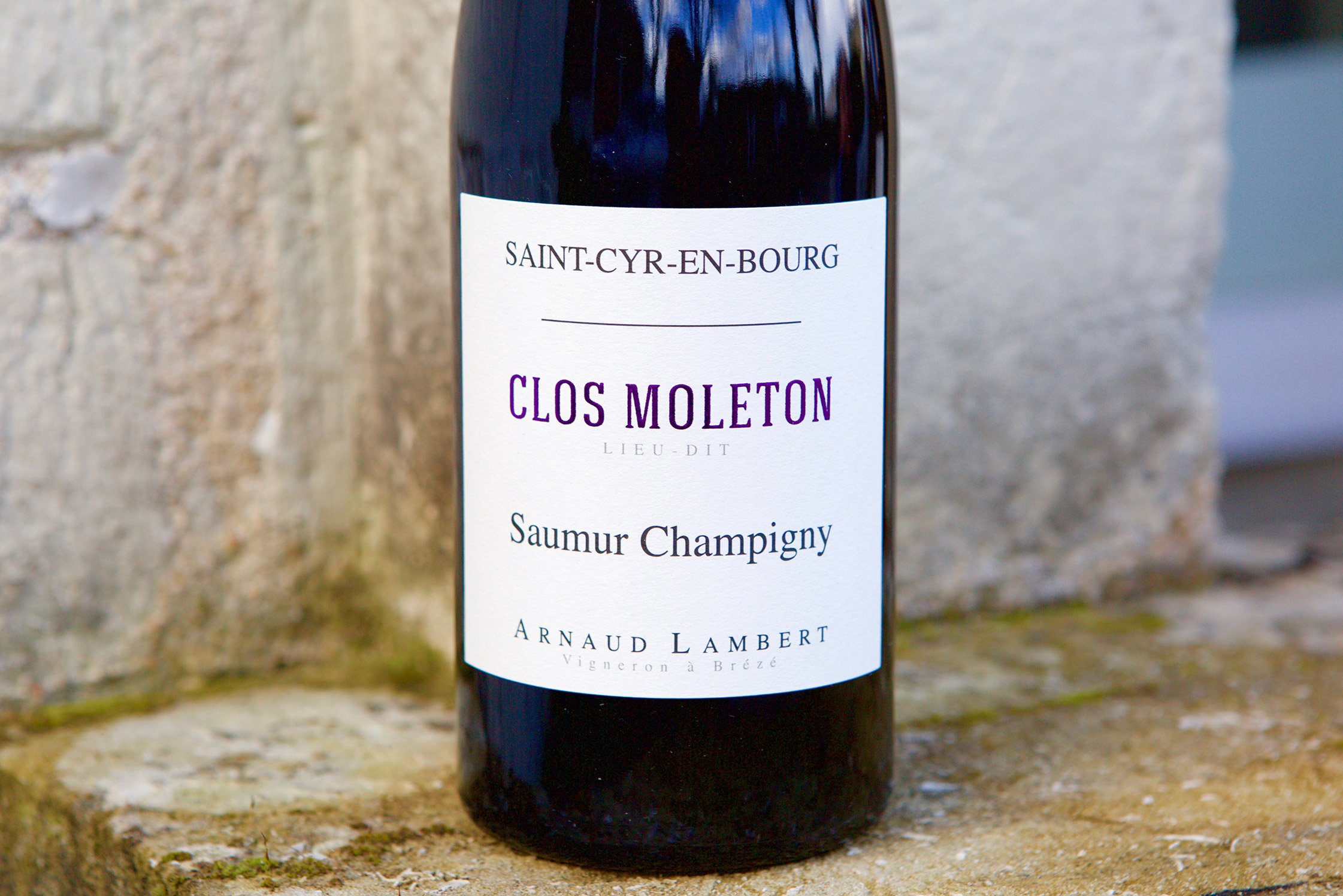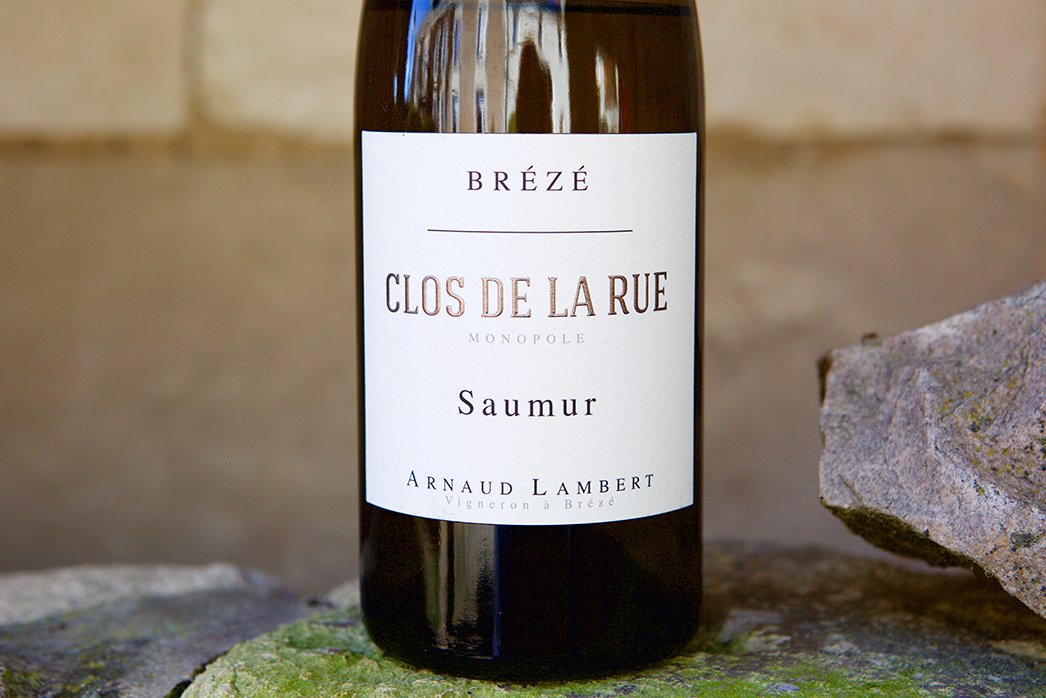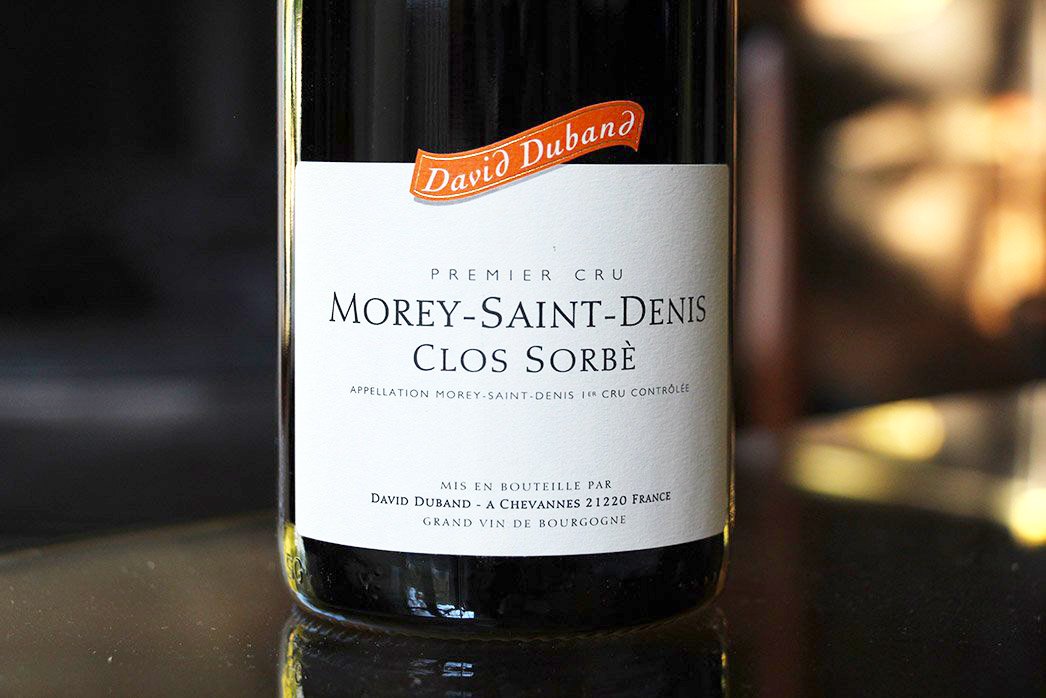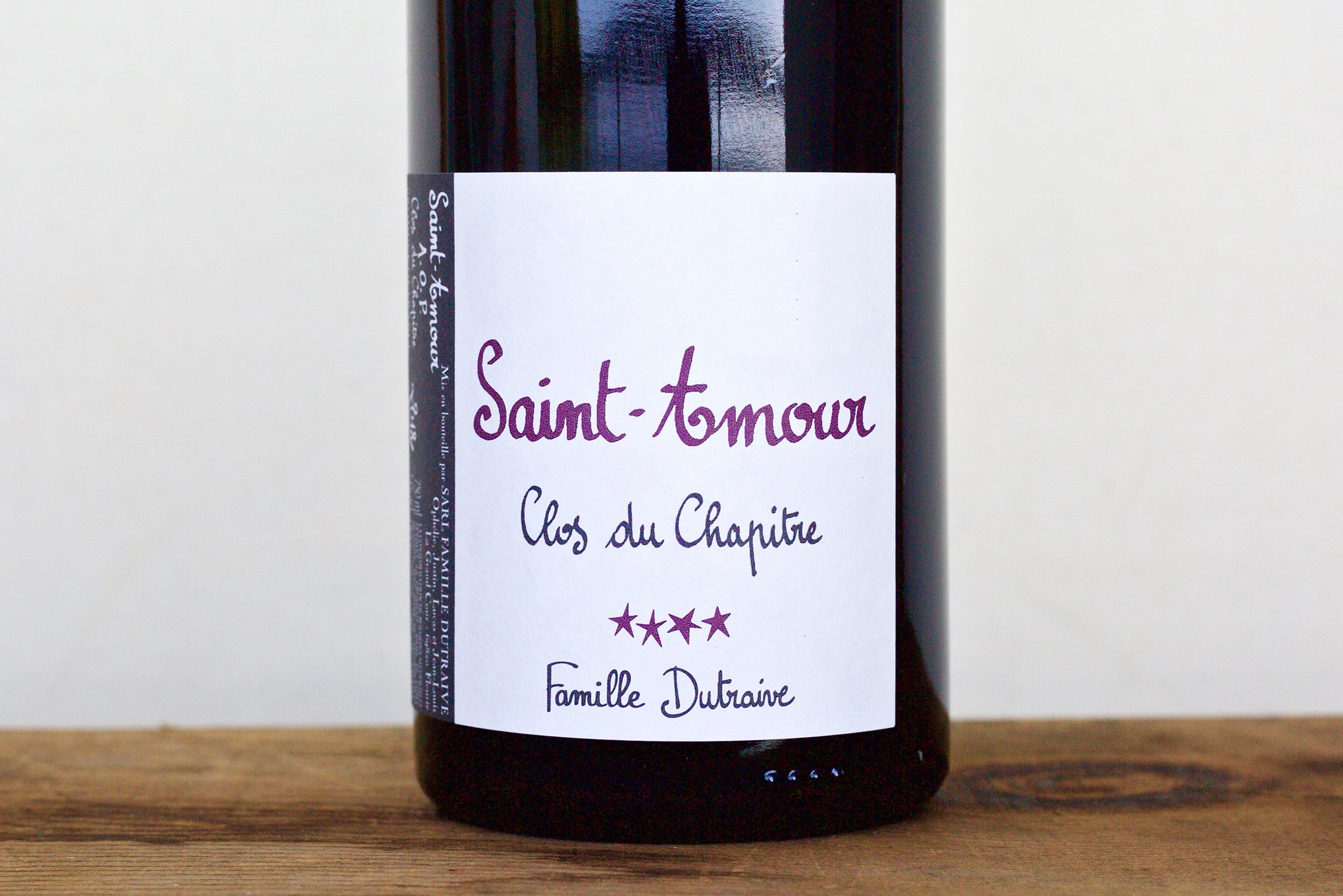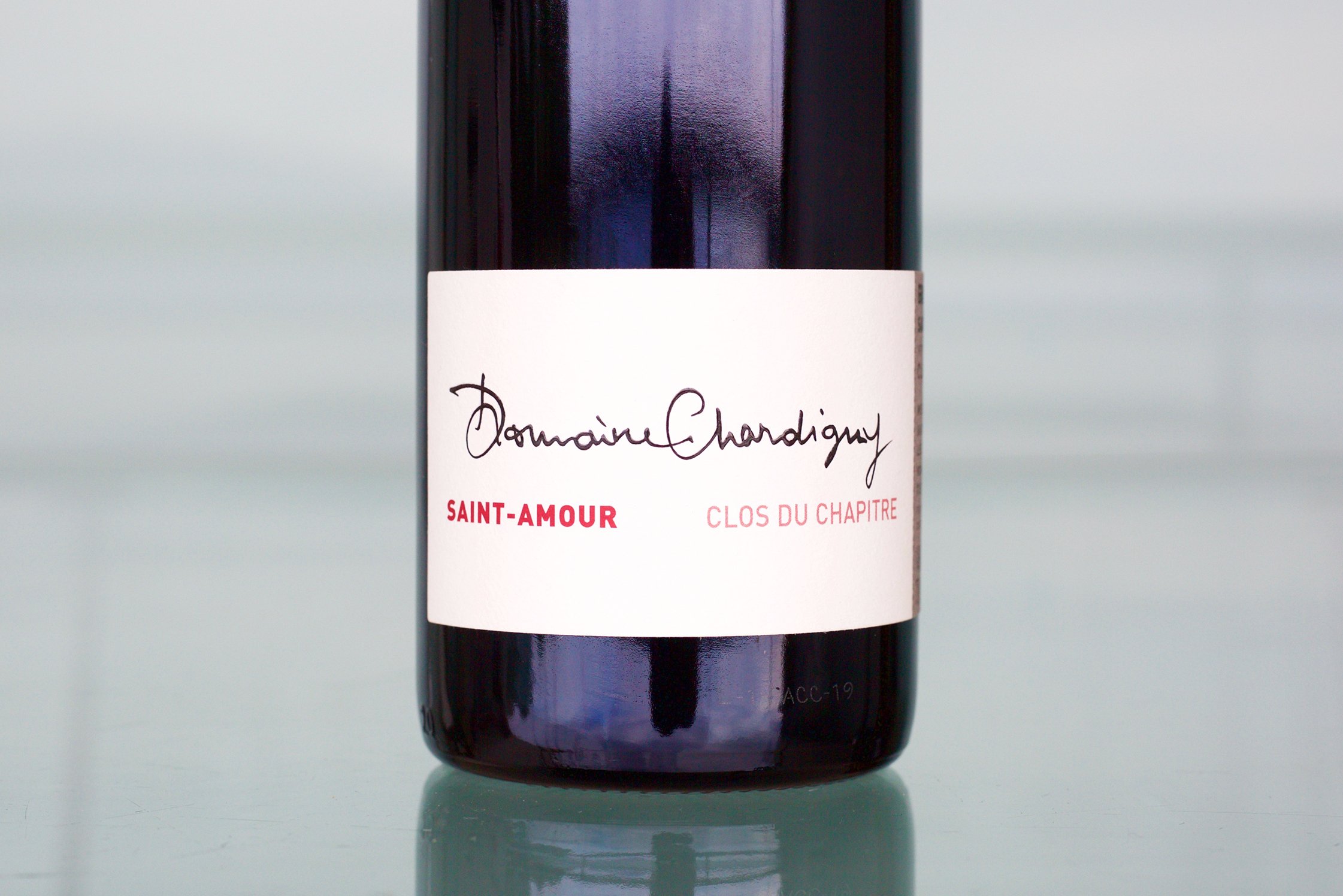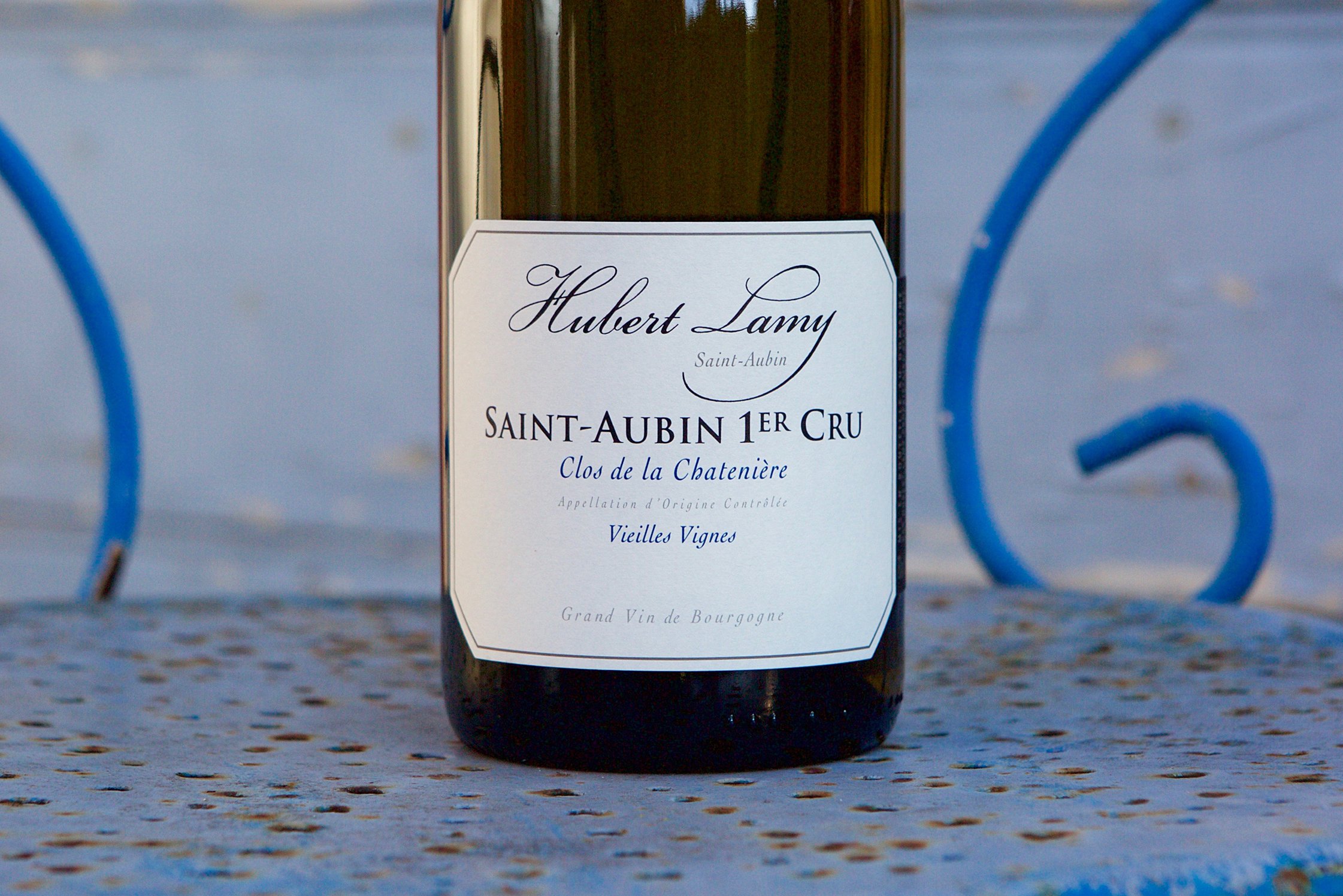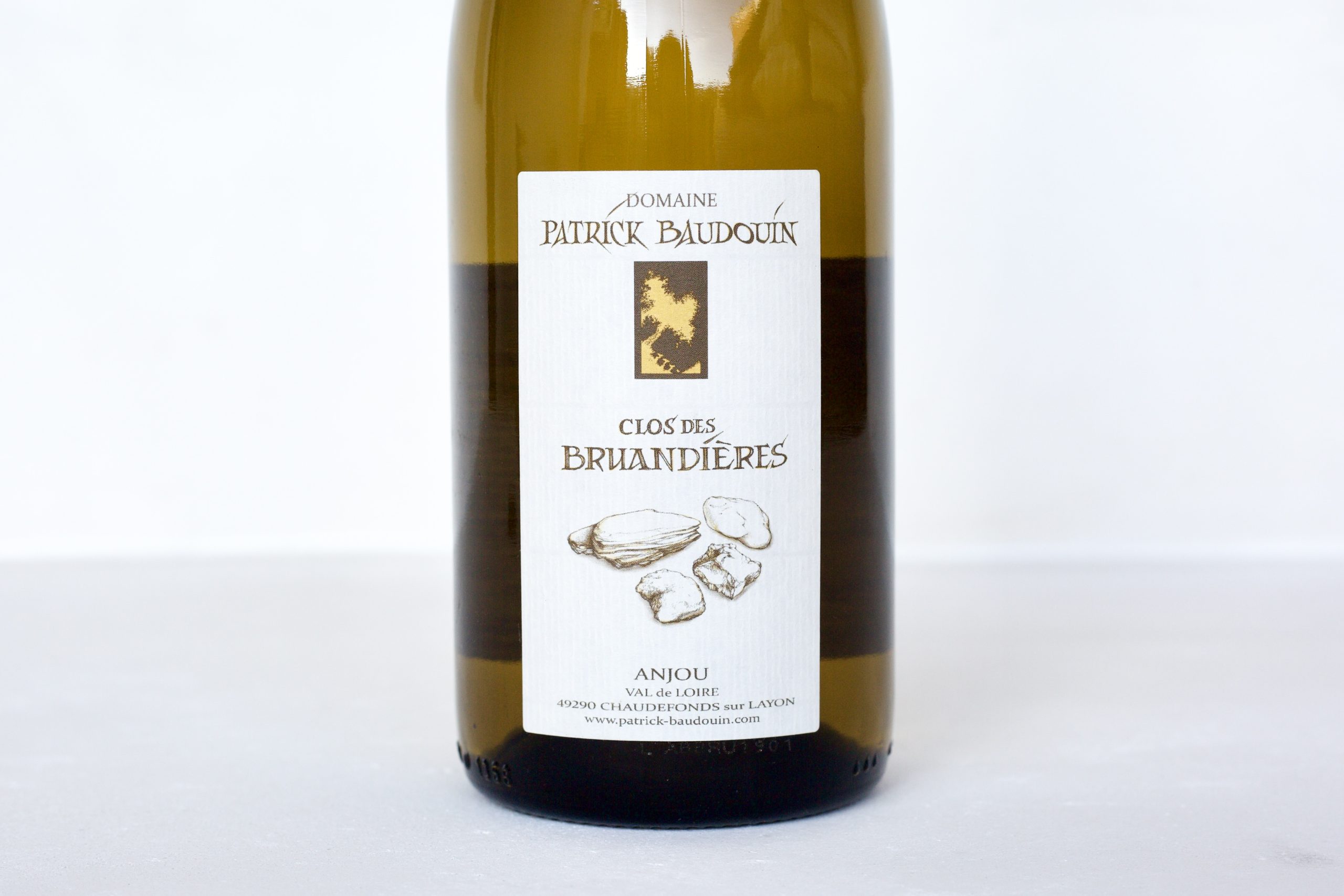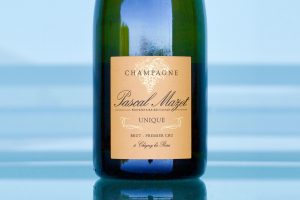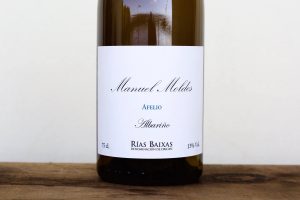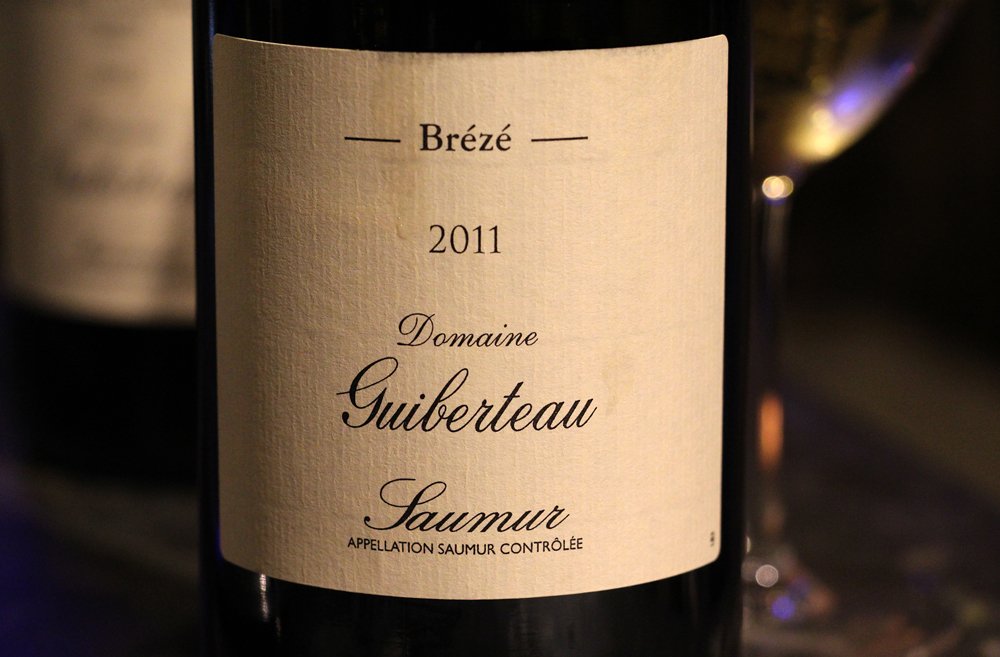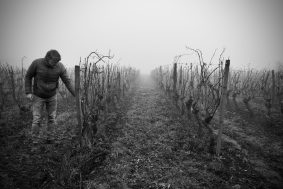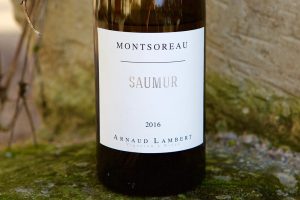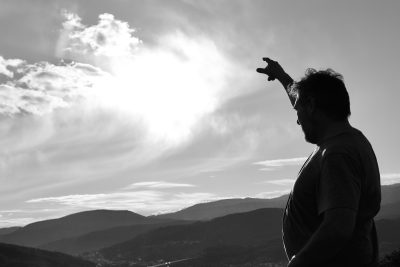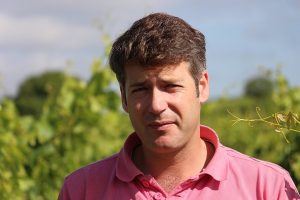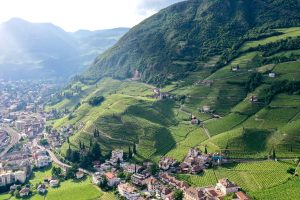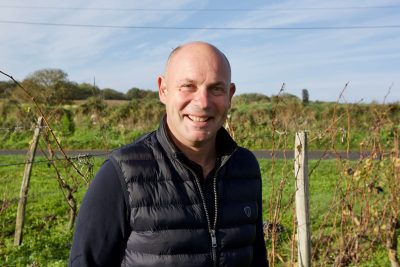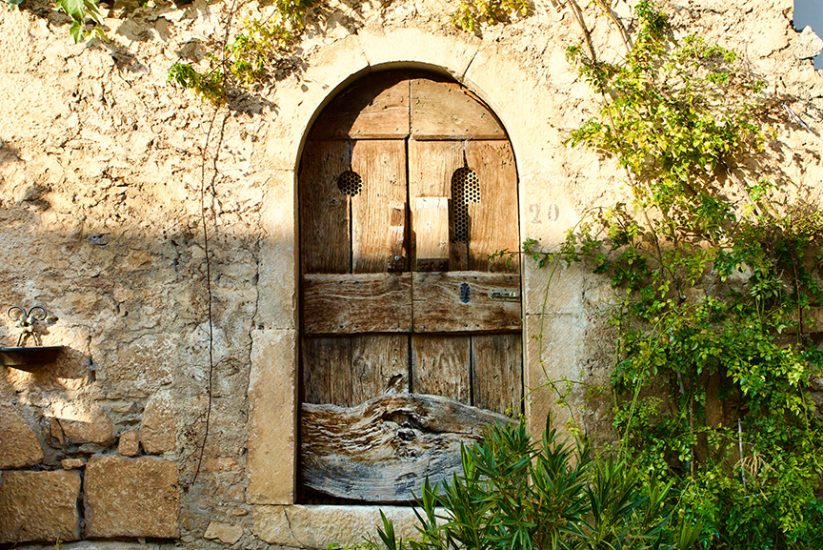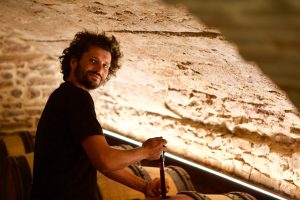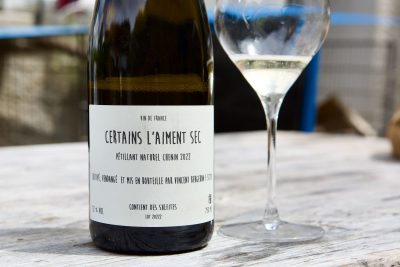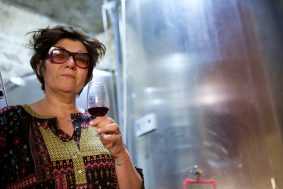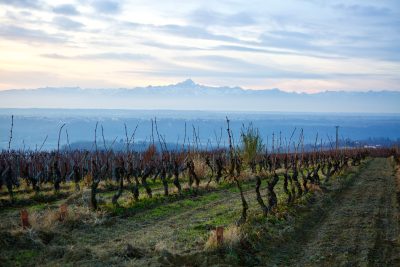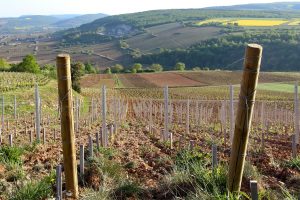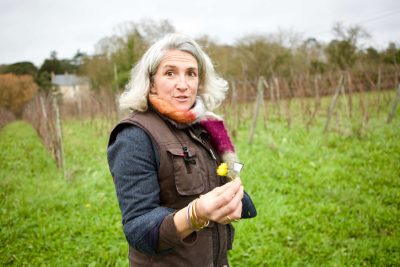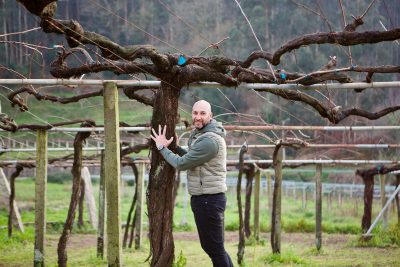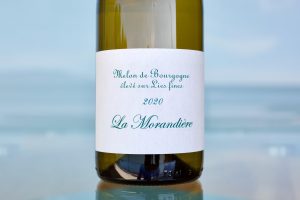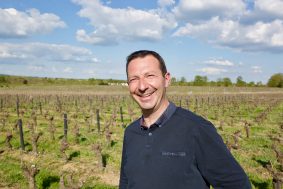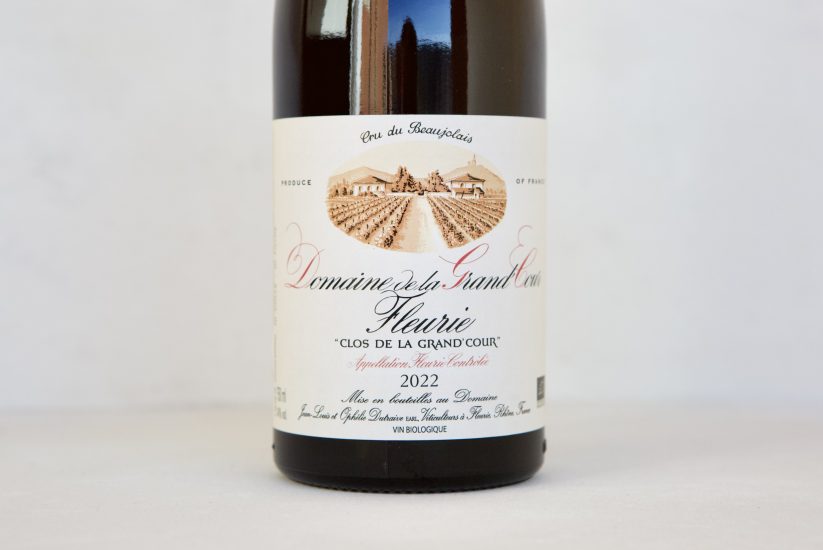Newsletter December 2025
A dream front entrance in Navelli, Abruzzo
There are very few years in my life that I’ve anticipated as much as 2026. Like many of you, I felt constant recurring moments of being blindsided, body-checked, steamrolled, pick-pocketed by Uncle Sam, whiplashed and emotionally dragged behind a car in 2025. I’m glad the year is coming to a close. But strangely, and hopefully like you, I’m feeling some unexpected tailwinds and am excited by what’s on the horizon in 2026. Come May, I’ll be fifty, and I plan to be in the best shape (physically and mentally) of my life by my birthday. Yes, I’m a Gemini, and as they say, it’ll be my annual Week of Freedom.
We have a pile of wines arriving in December. But due to our company’s 30-day no-sample policy after shipment, to allow the wines to regain their footing before we show them, they’ll all start to flow out in January, February and March instead. It’s going to be a lot, and we’ll need the time to get it all out properly.
As a reminder, here’s what was shared last month that will be available in January:
We expect the 2023s from David Duband, Les Infiltrés third vintage, Christophe’s 2023 1er Crus, a pile of Lambert, and a new grower for our California sales team, the “natural” wine world’s quietly legendary low-alcohol, Languedoc grower, Thierry Forestier, and his Domaine Mont de Marie. Landing in New York from Portugal is a touch more of the immediately legendary (as of last month’s California tastings and the inaugural release of the wines) San Michel and its Colares and Sintra-based wines, Menina d’Uva’s fluttering and charming Trás-os-Montes wines, and Constantino Ramos’s Lima Valley Loureiro (already in massive demand for the temporarily short supply). From Spain, the Augalevada 2023s, Manuel Moldes, Pablo Soldavini, Aseginolaza & Leunda, Michelini y Muffato Bierzos, Mixtura’s 2021 reds and whites (wait till you get a load of these!). Also en route is Prádio’s game-changing 2022 vintage and name-changing project for their Mencía and Pacio red, now called Familia Seoane Novelle—a slightly more challenging name than Prádio, which he was forced to change to avoid a lawsuit. Then comes the new organic Atlantic Mencía from Ribeira Sacra’s historic Ponte da Boga. In Italy, more of the highly requested Maneterra 2024 Vermentino, the extraordinary Castello di Castellengo and their deal-of-the-decade Alto Piemonte Nebbiolo range grown on Lessona-like volcanic marine sand, Paglinetto’s salty, beautiful Verdicchio di Matelica, Sergio Arcuri’s Olympic-level Ciró wines (2019 Più Vite & 2021 Aris), and Dave Fletcher’s remodeled and fresh take on Langhe Dolcetto, Barbera and Chardonnay, among others.
In the meantime, I’d like to take this opportunity to bring to your attention our new “tech sheets” which can be downloaded from all our website product pages; it’s a project that’s been years in the making: gathering photography, content, and accurate vineyard and cellar details that don’t just check the standard data point box but stimulate more thought and accurate theory on how the wine might taste. I was hesitant to do them, knowing full well the amount of interesting albeit monotonous work it would involve, but after years of prodding from our staff, I took it on.
Retrieving details from growers is no small task in itself, but it was also done in six different languages. Growers grumble at such formality when they know the variables are impossibly infinite, difficult to precisely define, and always a moving target because circumstances change quickly, forcing them to veer away from their plans and make spontaneous decisions that aren’t always remembered or recorded. But that doesn’t stop administrative anxiety for those who prefer to work with their hands, their noses, their mouths, and to do their thinking out in open and solitary spaces while pruning, driving the tractor, or racking barrels.
Below are examples of downloadable tech sheets from our website that represent what you’ll find on EVERY wine now. If you don’t want to print all the extra pictures consolidated on a second page, you can easily opt out and print just the first one.
Each page has a Producer Overview, an abridged version of our in-depth website profiles. Vineyard Details and the ever-changing Cellar Notes are taken directly from inquiries from the growers, which, I can attest, are often quite different from what you may hear during an off-the-cuff chat about the wines. When growers can sit down and write out these details, that’s when they have the greatest accuracy. Not surprisingly, when I send them the template I use for writing profiles and product details for our site, many respond by thanking me for my questions, because it made them sit back and contemplate what they’re actually doing.
For me, one of the most important elements is the eight-panel photo album, where so much is revealed in the portraits of the growers. All are candidly shot during visits as they move, explain, and emote in their home environment—pondering, often second-guessing themselves, or lost in thought. Nothing is contrived, with no setups for the shots; they’re simply depicted in a moment, often in thoughtful reflection as they explain their processes and experiences. For example, the picture of Vincent Bergeron shows his practical layers of clothing and hat that speak to the bite of the colder Loire seasons. His expression is calm, inward—the look of someone who listens to the land rather than trying to bend it to his will—a mirror of how his wines are composed. There’s a quiet patience in the way he holds himself. The black and white photo shows his young face already well-weathered from long days outdoors, and he’s relaxed enough to suggest an ease with the cycles that govern his vineyards and his financial security. Nothing about Vincent is performative. As someone who already knows the man, the picture speaks to me of someone who works, watches, waits, contemplates, and often openly suffers with the loss of an entire season’s harvest to bad weather and the threat to his family’s security that brings. This snapshot captures his emotional availability, the quiet discipline that defines his work, and perhaps the fleeting unease that comes with the unpredictability of his calling.
Take the momentary capture of Daniele Marengo bundled up in the cold Novello air at the end of a season, the end of the year. His look is familiar and defining, another candid shot, capturing the quiet inwardness of someone who has lived in these hills his entire life, carries their rhythms and through his family’s spirit as he shoulders the burden of what it means to be entrusted at such a young age with such a great responsibility—to lift a new Barolo estate; to run it with the full trust of his older sisters and their partners, his parents, aunts and uncles, and his grandma, Angela. There’s no bravado. He’s a young vignaiolo born in 1997, already shaped by Piemontese culture—its mountains, its hills, its struggles. Caught in contemplation, he’s not focused on those in his presence, but perhaps on those who worked these hills before his family’s tenure. Even his hands, loosely gathered, reveal a person who thinks before he speaks—a quiet gesture of someone assembling an idea rather than performing one. The portrait presents a youth and brilliance that watches and absorbs, someone who weighs decisions with the patience and wisdom resurrected from the cemetery of past talents and cultural icons; this is reflected in his wines that seem crafted by a master with a lifetime of experience. We see the calm, the hesitation, the spark of eccentric insight behind his eyes—the same qualities that surface when he pauses before answering a question, or when his sudden, thunderous laugh claps through his natural reserve and shakes the walls. As with Vincent’s portrait, it reflects his humility and seasonal sensitivity, which define his work: a young artisan negotiating the inevitabilities of nature, the burden of family legacy, and the fragile economics of viticulture, with the investments expected to be paid in full, whether there’s fruit next season or none.
The photos of rock and soil offer clues of what lies beneath them as the roots meander through pathways of least resistance. The Marengo photo collection highlights the soft limestone marls, the fine and sandy limestone soils, easily carved through by roots and washed away by drought and torrential rain. Bergeron’s shows the green and flat vineyards with clay and rock—a deep bed that reinforces the stout nature of the Montlouis wines, where Vincent sculpts his Chenin in an angelic spirit, their beautiful white fruit, fairy-dusted, green and citric. His hands are gnarled, bloody, ripped, charged to execute his mind’s desires—a man of the sky and earth whose hands seem like they were born of the latter a moment before the photo was taken.
The drone shots tell a different story. I do have a license, though it’s buried inside the hard drive of yet another broken Mac that died at the beginning of the pandemic. Most of what I’ve filmed was skirting the boundary of legality (I must claim ignorance of almost all laws but that of a limited altitude), and many times it’s nearly gotten me in trouble: with the Austrian police at Stift Göttweig, and in Montsoreau, with Arnaud Lambert, confronted by a local bike-riding hall-monitor, a retired French Karen (Carine, as it were), military base and nuclear-plant airspace and low-hanging powerlines, all closely missed. There were mishaps with two trees, however—one recovered drone in the Lima Valley, the other lost in the Wachau’s Spitzergraben, taking video of Brandstatt as it crashed behind the steeply terraced Trenning on a steep, fenced off hill decorated with autumnal trees and their slippery fresh litter. Perhaps it’ll be an artifact someone will discover in a thousand years.
Drone images reveal the community mindset of a people. We get a great view of the land, the exposure of the vines to the elements, their dimension (or lack thereof), biodiversity (or lack thereof), clear signs of responsible farmers, and their neighbors who carpet-bomb their vineyards. Indeed, the patches of our growers grow green with grass and herbs, and often stick out like a green thumb among many stripped and sore neighboring digits.
“Any fool can know. The point is to understand.”
-Albert Einstein
On the Details
Everything in our tech sheets has a purpose, and I’d like to preface why certain details are included. The details on our website are meant to serve as general notes and don’t precisely represent all the infinite variables that go into wine craft and how a wine will ultimately develop over time. We’ve picked our spots on some general concepts that leave minute details to your imagination, or for us to explain in greater depth in person. We represent growers who tend to their own grapes and don’t follow a recipe, no matter the season. Deeply committed winegrowers evolve and embrace change. No season is the same, and they rely on intuition and intimate knowledge of their land and past vintages to make calculated adjustments that suit every situation.
To know only whether a wine has added sulfites or not is too vague a detail; it doesn’t stimulate any consideration beyond that fact. But when sulfites were added during processing and aging, it’s a more salient clue about a wine’s theoretical stability, how much total sulfur may have been normal to add at a specific time, and how much the vineyard and cellar yeasts and bacteria imprint the wine before being controlled. It’s impossible to provide all the answers; on many levels, I’m not qualified to decipher and explain scientific reasons for outcomes, but I want to stimulate curiosity and contemplation with accurate information.
Over many years of traveling in vineyards and cellars, taking in a tremendous amount of information with well over a thousand different growers I’ve visited in Europe, I’ve consistently witnessed a story about a wine one day and another story on the next that slightly contradicts what I heard about the same wine the day before; it’s difficult, even for them, to keep track. Which “fact” should we present, and how do we pinpoint such a thing when it’s a constantly moving target?
One thing that surprises me most after working with geologists for more than ten years on the wine trail is that many growers know little about their bedrock or topsoil’s true composition. It can be simplified as sand or clay, but they both vary in their composition, and these base minerals matter, as they are one of the main food sources for the plant.
Finally, we are simply unable to cover all technical details with true accuracy. The variation is too great from one parcel to the next, from genetic advantage and health between vines in the same row, vintage to vintage, how the winegrower managed certain moments during the growing season (pruning, canopy, clusters), treatments and the dates administered and how much at what precise moment and why, or how much they added of something to the wine (sulfites, finings, yeasts, lactic acid bacteria) and all the other off-the-cuff decisions made during the wine’s creation. We’ve tried to keep it consistent and relatively general so that some of the crucial foundational points are relayed for you to build on.
Why Tasting Notes Are Missing
Tasting notes are unreliable without context. They do offer useful orientation in a rudimentary sense, but usefulness is not the same as accuracy. Some segments of our Grower Profile content have tasting notes, but it’s important to note when it’s tasted during its evolution, particularly with young wine tasted relatively recently after bottling. Wines obviously change drastically from one day after bottling to two months, a year, and so on. And a taste is merely a snapshot in time from a specific bottle, in a particular environment. Even in the most controlled professional settings with neutral glassware, stable temperatures, and repeated sampling, each bottle will still refuse full standardization. And while acidity is fixed in a bottled wine, its integration with the entire composition of the wine is not. Tannins and bacteria, among many elements of a wine, recalibrate within months in its earliest phases. Early tasting notes can offer first coordinates, a rough sense of fruit, structure, or balance, but without temporal context, they point to a moment that will never exist again.
Tasting notes do indeed create a shared language, but without chronological context, they can be misleading impressions detached from the moment that shaped them. Attempts will be made in our Source content to highlight consistencies with many wines in various settings and moments, from the first tastes out of barrel in raw and unfinished form to the full capture in bottle. However, I think they’re best left out of the tech sheet details, as they may undermine individual activation of creativity and tasting theory before even engaging directly with the wine.
Ecological Certifications?
Vineyard and cellar certifications are important distinctions. Growers work exceptionally hard and spend a lot of money to attain and maintain them, and we want to respect them rather than casually throw references to these accolades around. However, uncertified growers who practice highly conscious viticultural philosophies are no different to me than those with certifications.
More than 90% of our growers maintain organic farming certifications, but what’s most important is that growers are in touch with their land and have great reverence for nature. This is immediately obvious to us when we observe their vineyards in person and ask the hard questions–certified or not. I regularly visit almost every grower at least once a year, and vineyard biodiversity is one of the great clues of true sustainability.
But imagine if every third year, you worked hard but didn’t make any money because you thought you should adhere to a strict dogmatic approach to your job. Would you take such a risk when it could cost you so dearly, cost everyone in your family, and those who put their faith in you as an employer?
The challenge of being judged on whether one is or isn’t certified has made the industry practice of misrepresenting certification status commonplace. This is why, within our content, we try to make these distinctions explicit. If a grower is certified, it’s noted. If they’re not, we make it clear if they follow the practices and philosophy of certification(s), mostly always, with some growers occasionally utilizing minimal traditional methods in times of emergency.
Much of our work as importers is to visit vineyards (after all, that’s where good vignerons spend most of their time), instead of just tasting new wines in the cellar and quickly moving on to the next appointment. The best time to visit is in the spring, when the yellow and orange death of the first herbicides would be impossible to hide from view. However, I’ve always made it a point to ask our growers directly, and it doesn’t take but a second to know if they’ve used them before even a word is said. If I get the response I was hoping not to hear, I always view it as an opportunity to engage and see how willing they are to consider change.
Perhaps to the dismay of us idealists, there are many compelling arguments for the use of certain synthetic treatments in vineyards when compared to the impact imposed by the constraints of organic or biodynamic certification, and it’s a tough argument one way or the other once the research is presented.
I’ve always believed that what’s most crucial is that whoever’s crafting the wine needs to work in their vineyards themselves to understand the specific challenges of any given plot. Look at the growers’ hands. Look at Vincent Bergeron’s rough hands in the above photo album. The clean and soft hands in Marengo’s photo album holding limestone marls are obviously mine, not Daniele’s! It’s the makers’ experience and knowledge of their land’s tendencies that give them the knowledge to measure applications with precision instead of carpet bombing with something that can do more harm than good to the vines’ health (and that of the wine drinkers!).
Is some level of sustainable farming with effective and relatively safe synthetics the way to go if we place our planet above our personal ideals (and perhaps our health)? That’s a decision each has to consider. As importers of wine—organic, biodynamic, natural and the rest—our hands are as dirty as anyone’s with the current methods needed to encourage production and then transport wine from a European cellar to a table in the US.
Climate
The general climate and regional overview are usually noted in the short Producer Overview. Sometimes that may have been minimized due to assumptions we make about the high level of our readers’ knowledge base. Some regions, particularly in Europe, are defined by the weather more than anything—the grape varieties largely chosen because of it—and how it relates to other parts of the wine world. Extensive climate details are largely found inside the producer profiles.
Topsoil and Bedrock
While some would argue that terroir elements like climate, exposure, and vine age exert more influence than soil alone, details count when it comes to a wine’s vineyard soil. Soil constitution can be divided into a few basic but distinguishing categories that play a role in shaping the wine; some are more significant than others: general topsoil depth and grain size (clay, silt, sand, gravel, cobbles and/or boulders), soil composition (its source material/rock), and bedrock. These factors determine soil nutrition and water-retentive abilities, which influence the shape and taste. Bedrock and topsoil are also the reasons specific grapes were chosen; for example, in Austria, Grüner Veltliner thrives better in soils with higher water-retentive capacity and easy access to nutrients; Riesling develops its complexity in poorer soils and a much more stressful environment in order for it to find its peak expression. Some note that root architecture and rootstock selection can outweigh soil type in determining water uptake, and mineral flavor doesn’t reflect soil mineral content, and impressions of “minerality” may often arise from fermentation compounds rather than the bedrock and topsoil.
In wine lingo, sometimes we refer to wines as “horizontal” or “vertical” in shape. This is to say whether the wines are more tense, angular and straight (vertical) or more expansive, rounder and broader (horizontal). Much of this seems to have as much to do with the variety, climate, and the soil composition and structure than how the wine is made. If the soil is completely spare and rocky, the wines tend to be more vertical and less horizontal because there isn’t much flesh on their bones. (Of course, many growers try to fill in those terroir gaps with cellar techniques, but there are the purists whose intention is to express a terroir by accepting the perception of missing elements because that’s what the terroir has provided.) If the topsoil is deep and rich with good water retention it may render wines less “vertical” and fall into the more expansive, fleshy “horizontal” description.
It’s also worth acknowledging a deeper challenge to the entire premise. What we interpret as “soil expression” may actually be the product of factors correlated with geology rather than caused by it; water availability, ripeness levels, microbial shifts, rootstock behavior, clonal selection, and regional winemaking culture are strongly influential components. Under this view, bedrock and topsoil may be descriptive anchors rather than drivers of sensory consistencies we attribute to geology and might emerge from vine physiology and human decision making more than from the rock and dirt themselves.
For growers who minimize manipulation in the cellar and vineyard to give greater voice to the terroir, the bedrock and topsoil become paramount. Of course, we know that consistent patterns emerge from different wine regions on similar soil types and that experienced tasters often find those links in blind tastings. The connection between soil and wine remains one of the greatest consistencies of a vineyard and its resulting wine, despite the influence (or non-influence) of those who crafted it. It’s also one of wine’s great mysteries, yet we cannot forget that most soils are amended, even by organic and biodynamic practitioners. This complicates the idea of “pure” soil expression, since amendments alter biological and mineral balance, including soil pH. To complicate the matrix more, microbial communities within those soils (fungi, bacteria, mycorrhizae) may shape aromatic outcomes more than soil mineral content.
Since we all have the fortune of working with some of the most talented wine thinkers, growers, importers, wine buyers, sommeliers and knowledgeable collectors of our time, there is much discussion about what kind of bedrock and topsoil potentially influences the resulting wines, no matter what sort of tricks or techniques are employed in the vineyard or cellar. We also note that soil and rock type can vary dramatically within a single parcel, making it difficult to pinpoint dominant features.
To borrow from two of our good friends and their book, The Sommelier’s Atlas of Taste, they quote another good friend of ours, Pedro Parra, a specialist in terroir who presented to me a decade ago this same data of his experience analyzing wines grown from specific bedrock types. One excerpt from the first chapter (one of the most compelling chapters I’ve come across in any wine book) reads, “Granite, he [Pedro] says, offers a very acidic sensation, with a huge amount of energy/minerality in the front of the mouth. He doesn’t feel much impact on the sides of the tongue. Wines growing in schist also have acidity, he says, but it is felt more in the cheeks. The wines feel bigger—not round, but with more energy than granite felt in the cheeks and sides of the tongue. ‘Schist is always about power,’ he says, ‘a mineral bomb.’ Limestone is easier to identify because of its distinctive short tannins and energy. Limestone wines aren’t round, but go farther down the tongue. They’re elegant, with a fine granularity and subtly tense electricity. Finally, he says, volcanic substrates tend to be a little flat and rustic, lacking in electricity.”
Skeptics note that these sensory claims remain unverified in controlled blind studies and may reflect metaphor more than measurable chemistry. Pedro’s suggestion is not an infallible guide, but since meeting him, I’ve observed these aspects and find them to be consistently truer than not with the wines we import from sites throughout Europe with a specific dominant rock type.
Our interest in providing an even more accurate survey of these vineyard characteristics is the reason why we’ve had a geologist on payroll of some sort since around 2015, starting with Brenna Quigley before she rocked the greater wine world (pun intended), and now with many excerpts in our content along with a series of terroir maps developed together with Spanish PhD Geologist, Ivan Rodriguez. Research still lacks clear chemical pathways linking soil minerals to specific sensory outcomes in finished wine. The most compelling reason to include this in our content is to share enough information about bedrock and topsoil to further the conversation by doing our part in developing a sort of in-house database in which others can compare notes.
Vine Age
This is an interesting consideration because what truly separates one masterpiece wine from the rest may have to do with what characteristics you like in your wines, not the age of the vines. Old vines don’t automatically mean better wine (only different wine), and this varies enormously by region, grape variety, and farming culture. We can assume a position of some sort in tasting theory on a vineyard’s age, yet vine age should not be hierarchical. It’s just one variable in the matrix of a wine.
Our vine age notations should also be viewed as general. The dates inside our Vineyard Details in parentheses represent the year this information was received by the grower. If ten years pass before an update on the material, it’s easy to figure out the general vine age unless it recently went through a large-scale replanting. What’s important to know is that a vineyard plot’s vine age can absolutely impart characteristic qualities to a wine. It’s interesting to note how young, middle-aged, old and ancient vines may express themselves through wine, and this compels most to want to know the vineyard’s age.
One could say that young vines don’t bring complexity, and this statement may be largely agreed upon because of the lack of development of the root systems and the overall weakness of the younger plant, but it’s not empirically true. Young, but not fledgling vines have vigor and energy, but perhaps not a great depth of complexity. However, young vines from talented terroirs and growers still produce wines to be admired and enjoyed, and are not so vastly different from those from older vines. On many occasions, younger vine renditions are more appropriate for certain moments than old vine renditions. This perception of vine age also often stimulates the grower to treat the grapes and wines differently, thereby perpetuating or building on this sense of innate difference.
Wines made from old to ancient vines have a specific depth and weight, partially due to lower yields and (in theory) deeper root systems that may take in more complexity the further they plunge. On the other hand, wines rendered from these vines may sometimes be dense and glycerol on the palate, making for a show-stopping couple of ounces but a difficult bottle to finish without the help of a group. I’ve also tasted young vine wines that taste like they’ve come from ancient vines, and sometimes those rule the day for me.
While age may correlate with certain vineyard impressions, the hard science remains less conclusive: root depth is driven more by soil structure than age, yields can be lowered by pruning and other methods of control regardless of vine age, and physiological efficiency often favors younger vines. Young and old vines under controlled conditions show that most differences attributed to age (complexity, concentration, depth) can also arise from farming choices, disease pressure, microbial variation, or simple vine balance. In other words, vine age may influence expression, but it is rarely the primary causal force for high quality, and it never operates in isolation.
Perhaps the sweet spot is somewhere in the middle where the plant has hit its prime, and on all fronts, it seems balanced. But who’s to say what the prime of a plant is for each clone or massale selection and the vineyard it’s planted in? This is a matter of taste, and not everyone always wants this kind of static balanced MVP in their glass. Differences keep wine interesting. Vines of all ages have something to channel and it’s simply a matter of mood and frame of mind during our constant development and evolution.
Now we dig into some areas that help us theorize a wine’s characteristics based on its respective vineyard’s physical principles.
Altitude, Aspect and Gradient
The altitude, aspect and slope gradient are crucial details that play important roles in a wine’s intrinsic characteristics. This likely doesn’t require much of an explanation, but to distill it down to what’s important, these elements directly influence a grape’s ripening, structure, complexity, taste and aroma profile. The information concerning altitude, aspect, and gradient doesn’t take up much space in the Vineyard Details, but these characteristics greatly influence the shape of the wine and many of its structural elements and aromas. They offer simple theoretical guidelines, a quantifiable element for how a wine is likely to taste and feel.
Altitude influences temperature, and the higher up you go the colder it becomes. For example, Jean-Nicolas Meo, from the famous Vosne-Romanée estate, Meo Camuzet, explained to me for the first time on my first trip to the Côte d’Or in 2004 at the base of La Tache that the difference in the ripeness from a vineyard that sits at two hundred meters and one at three hundred can be a full degree of potential alcohol on the same day, the lower alcohol being from the higher site. This simple concept is one of the great keys to understanding some aspects of the profile of Burgundy wines, as well as many other regions on notable inclines.
Aspect can explain a lot about wine. For example, an open eastern exposure (meaning with no close topographical features in the way) brings early morning sunshine and can render fresher and brighter characteristics when on a hillside as the direct sun hits the vines early, but may—depending on the steepness of the parcel—also cast a shadow on the vines long before the sun sets, often hours before. In the northern hemisphere, direct south may be the easiest to reach balanced and consistent ripeness from one year to the next, and there are many examples of this throughout the wine world. On a south- or west-facing plot in the late afternoon during a heat spike, the direct sunlight can push grapes closer to dehydration faster than those facing east and can scorch western exposures and bring a very different taste to the same fruit nuance compared to one next to it facing east. It’s not improbable for even a less experienced taster to recognize in the context of a flight from the same vintage and producer which vineyards likely face in what direction based on the fruit nuances and the structure of the wines.
Slope gradient is another equally influential factor that shapes wine. It offers clues to the level of topsoil available for the vine, or whether the topsoil is naturally derived from the underlying bedrock, or not. Gravity and steep slopes make it difficult to keep topsoil around, so, for centuries, growers have brought it back up the slope and put it back into terraces, just like they do for gardens. In the Côte d’Or, for example, vineyards at the top of the slope struggle with balance in the coldest years to find full ripeness, and also in the hottest years because the shallower soils don’t provide refuge during the scorchers, potentially leading to quicker desiccation and an imbalance in ripening. Stickier soils like clay can stay put longer, even on steep slopes, as they do in the Côte d’Or than the decomposing granite on the treacherous hills of Saint-Joseph. Once broken away from the granite bedrock, the granite sand and gravel easily slide down, creating constant erosion and exposing rock outcrops while keeping the topsoil in a perpetual state of sparseness. In these extreme locations with looser topsoil, terraces are constructed to try to minimize this constant challenge. But without some aided cover crops or a no-till practice in a rainy area with these soil types, good luck keeping the topsoil in place.
The flatter the vineyard, the more important the grain and compostion of the soil. Some flat sites are perfect for viticulture, while others are best suited for corn. Much of Bordeaux is flat and wet, but the well-drained gravels of the Haut Médoc, for example, have managed to render the most reliable and consistently age-worthy red wines in the world. Put those varieties in a colder area and with more water-retentive soils, and you may get a weedy mess of a wine. In Burgundy, the transition from vine to other crops is a matter of soil change, not altitude or exposure. In some areas, it happens only within a few meters.
Cellar Notes
Simple cellar notes are what are typically found on a tech sheet. Each detail focuses on general practices and not quantum mechanics—well, at least everything around sulfites. Some details may not seem consequential, but we believe they are important when considering intricacies and potential stability.
Vinification and Aging
Details like sulfite addition and its timing can go down many endless rabbit holes since there’s so much to say about it. Some of the more obvious implications (at least to the experienced wine professional) include whether whole clusters are fully or partially used in red wine, or not at all, and how that can radically change the wine’s profile; fermentation times, which is not a perfect assessment here, because there is always a variation of days from one vintage to the next; the amount of extractions per day/week/total before pressing and how the producers extracts (rack and return, pumpovers, punchdowns, gentle pushdowns by hand only inches deep, or no-touch infusion and carbonic or partial carbonic—all have varying differences of extraction), a very important detail during the process which can ultimately influence to a great degree the color, tannin, weight and other elements within a wine’s final characteristics. But to simply state their basic approach without its frequency in a day or week would be leaving a very important detail out. Punchdowns? Once per day, three times? Or once in the first three days and then never again? All that counts: oxygen management during fermentation and maceration is equally decisive, shaping color stability, tannin integration, and aromatic development of reductive or oxidative elements as much as extraction and aromatic lift itself. Yeast selection and nutrient management (YAN) also shape the speed and behavior of fermentation over time and aromatic profile as strongly as temperature or extraction.
Fermentation length and temperature also speak volumes about how a wine can taste. As mentioned earlier, temperature gives a good idea of more primary fresh fruit and flower notes with lower temperatures that simmer at a slower pace. Higher temperatures steer wines into reducing primary characteristics and strengthening secondary expressions earlier in the wine’s life. In white wine, depending on the area and the fermentation vessel, temperatures are commonly lower than in red. Barrel fermentations tend to stabilize in the mid-20s Celsius, though this depends on cellar temperature, barrel size, stave thickness, and the grower’s level of temperature control. In a relatively controlled environment, the smaller the barrel and the thinner the staves, the lower the thermal mass and the more quickly heat can dissipate. Larger vessels can build much greater thermal mass, and if not controlled, temperatures can reach precarious heights for yeast health and, consequently, fermentation health. Stainless steel tanks without temperature control can spike in temperature much faster than wood vats of the same size. At 30–32°C, most yeasts begin to be greatly stressed, resulting in possibly negative effects: reduction issues may arise (which can also arise with very low fermentation temperatures), along with the risk of more unwanted volatile compounds and stuck fermentations. In the mid-30s, yeast experiences significant mortality due to heat and increased ethanol levels, and fermentations may begin to stall, often leading to bacterial issues, greater volatility, and long-term instability. Above those temperatures, one may fall back on cultured yeast for assistance or allow the fermentation to rebound naturally once it cools down, but risk fatality of the batch if it doesn’t. In any case, extremely high temperatures are a dire condition for fermentation health.
White grape skin contact time clearly has an impact, but this varies based on variety, with some being much more affected by it. However, this isn’t reserved only for the orange wine category. It’s also part of the greater program in places like Austria in their Riesling and Grüner Veltliner production, which tends to be a few hours to a full day of crushed berries before pressing and fermentation. Often, the gauge is whether the grapes are green or more golden in color or with botrytis: the green is given more time on skins, while the latter is between no hours to a few. Wines categorized as “orange” often have lengthy skin contact and full fermentation on the skins (sometimes stems too) for days and/or weeks before pressing.
For red wine in our market division, the common choices are many, but, as we all know, these days shorter maceration times are a focus because of the demand for fruitier styles and less interest in long-term aging. It’s also an adaptive response to the regularity of warmer vintages, higher natural alcohols and the need to avoid harsher phenolic extraction with less ripe seeds and/or skins. The ceremonial aspects of wine are fading along with the older generation collectors and drinkers. Old wine, for me, remains the ultimate frontier in wine’s depth of complexity, but this is also fading away with shorter wine lists and the interest in fruit-heavy, lighter style wines, which I love as much as any style of wine.
Cellar aging is one of the more obvious inclusions in this information detail. I won’t go into the specifics about the consequences of every choice, such as aging vessel types and the length of time within them. The information in this section includes details that begin from about the time the grapes were harvested and the moment they’re put into the bottle.
Vessel Type
Wines age in all sorts of vessels in all parts of the wine world, and with many variations within each type.
With wood, it’s often oak (French, American, Slavonian, Hungarian), but also chestnut, acacia, cherry, driftwood (kidding), and all can impart distinct nuances. Then there’s the barrel age, which remains the most common inquiry if a wine is in fact aged in wood. We can no longer just say amphora anymore because there’s terracotta, earthenware, tinaja clay, qvevri clay, talha clay, Impruneta clay, high-fired ceramic, stoneware, sandstone, granite, basalt, and concrete (coated or uncoated), and all sorts of other vessels, like fiberglass, porcelain, stainless steel and more.
Then there’s the size of the vessel and its porosity. This can lead to a deep exploration that can be made on one’s own, but we’ll always list the general volume of these vats and barrels, and sometimes the shape, if unusual and noteworthy. They are clues that also point to how a wine will evolve, because the ratio between liquid and the surface of the container determines both the pace of oxygen exchange and the concentration of lees in contact with the wine. Larger vessels slow everything down—oxygen ingress decreases, temperature swings flatten, and the wine tends to develop with greater steadiness and less oak-derived influence. For tannic varieties that bear finer aromatic nuances, like Nebbiolo, larger barrels are ideal for growers that want to preserve its fine aromas while slowly softening the tannins through longer aging. Small barrels, by contrast, amplify the dialogue between wood and wine, accelerate structural softening, and promote more noticeable aromatic shifts in shorter times. Even in inert materials like concrete or clay, scale matters. Larger forms create a more tranquil internal environment, while small ones encourage more rapid settling, clarification, and textural change.
I won’t pretend to know the nuanced effects of every aging vessel, but it can be a useful tool to get acquainted with these details with greater precision and less generality.
Vegan Wine?
How can you know a wine is truly vegan? I suppose one has to ask how far they want to go in excluding the involvement of animals in connection with the production of wine (noting that many vegans define the term to include inputs used in the wine, not the broader agricultural ecosystem). That said, if there are any animal products used for any wine in our collection, we will do our best to find out what they are and list them. It would be fair to say that most animal products used as a fining agent are byproducts of animals that were used as a food source first, and the inedible parts are used for something instead of being discarded as waste. Even so, strict vegans would argue that using byproducts still participates in the same supply chain and is therefore not ethically neutral. I believe that in most cases, if the animal wasn’t killed in the first place for food, the byproduct wouldn’t likely be available, or, if it were, it may cost a fortune on its own.
It would also be a safe bet to say that if there are vineyard fertilizers used (which there typically are within at least a 5–10-year rotation, but likely more frequently), there are usually animals involved, especially in organic and biodynamic farming. I’m not sure if this would disqualify a wine from being vegan, but perhaps the strictest practitioners will not likely be able to drink any wine in good conscience that has been produced on this planet because it’s likely not free of some kind of animal contact in some way (even though vegan certification bodies generally focus on winemaking inputs rather than total ecosystem purity). Indeed, they may exist, but again, how far do we want to go with this, and how reasonable is it to expect any agricultural product to be entirely animal-free in a literal sense? At this point, because of the loose interpretation and unofficial guidelines, we won’t state whether a wine is vegan or not. However, I assume that some vineyards do use exclusively plant-based composts or vegan-certified fertilizers.
Enological Additions (& Subtractions)
Fining and filtration details shouldn’t be generically stated as though they are all the same. However, truthful explanations seem like they could stir some minds into thinking that wines are simply stripped out because they’ve been fined. But avoiding clarity and truth can invite a deeper mistrust, so instead of being coy about the subject, I believe we can take it head-on and simply list what we know from our growers.
Most of our growers prefer to only intervene with intention rather than avoidance, knowing that certain finings can amplify rather than obscure terroir. Ideally, the growers we work with want unhindered and clear terroir expressions with as little touching as possible. However, when wines have a lot less time aging before bottling, commercial risk management is important. Time itself is a tool, and growers choose between time and treatment depending on both style and circumstance. Market cycles and cash-flow needs, for example, shape these decisions just as much as cellar philosophy.
One subject within the additive department that you will most likely see, aside from sulfur dioxide, is fining agents, if they’re used. It’s important to define the fining agent as they range from non-synthetics—like egg whites, bentonite clay, animal-derived substances, etc—and of course, a multitude of synthetics. And it’s worth noting that “synthetic” is not inherently pejorative; many synthetic fining agents are designed to be more selective and less extractive than traditional natural options. (However, the casual use of synthetics in one area of a grower’s work would raise an eyebrow when it comes to potential practices using other synthetic treatments or materials as well.) I’d like to cite the Australian Wine Research Institute (TAWRI) for a concise explanation: “The purpose of adding a fining agent preparation to wine is to soften or reduce its astringency and/or bitterness; remove proteins capable of haze formation; or reduce color by the adsorption and precipitation of polymeric phenols and tannins. The fining agent reacts with wine components either chemically or physically, to form a new complex that can separate from the wine.” In other words, fining agents are used to take things away from wine, not add to them.
With this perspective, we could say that fining agents are additives, but not truly ingredients, as they remove things and then are taken away from the wine; they’re more of the opposite of an ingredient. Even so, their use shapes the wine, and the transformation they enact is what consumers often care about more than the technicality of whether they remain in solution.
For small domaines, like the ones we principally work with, finings, as far as what I’ve gathered over the years, fall within the natural product category, and the most common is bentonite, though growers accept that it can be one of the more extractive options. Its impact can be variety-dependent: aromatic whites and delicate varietals sometimes lose volatile compounds if bentonite is used too aggressively. This clay is mostly used for the removal of proteins capable of haze formation. If everyone were ok with a little haze in their wine—we suspect that many consumers still prefer clarity, though tolerance for turbidity has grown significantly in recent years, especially in fresh white wines bottled within months after harvest and those from growers that place themselves in the “natural wine” practice—growers might not be motivated to use finings to make their wines with a short aging period in the cellar that renders wines that look perfectly clear.
Most wines bottled in the first spring after their harvest season need some assistance to reach a broad commercial appeal—especially those intended for market within six months after the grapes were picked. Likewise, if the transport of all white wines with short cellar aging were kept at low temperatures (which is likely not to happen from the moment it leaves the cellar until it finally gets poured), the potential for unstable proteins to not coagulate and to create a haze is elevated, but then there’s the handling thereafter. There are some grapes, like Grüner Veltliner, that have a lot of proteins, and if they are bottled shortly after harvest, the probability is high that they will need fining for clarification. Still, most whites can reach stability through settling and time alone. Cellar practices, like precise racking and natural cold stabilization in the winter months, allow the avoidance of fining even with difficult varieties.
Filtration is also villainized as though a membrane filtration that removes all yeast and bacteria is the same as a lighter “coarse” filtration to remove only larger particulates, like seeds, skins, and lees. Then there are all the in-between options, like diatomaceous earth, crossflow, plate and frame pad filtrations. They’re all different, all relative to the conversation, and should be noted if known. And behind those technical differences lie philosophical ones: some growers pursue clarity for precision, others preserve colloids for texture (microscopic suspended particles larger than molecules, smaller than solids, like proteins, polysaccharides, tannins, etc.)—each a valid expression of intent. Filtration decisions are also shaped by economic reality: wines destined for long export chains or by-the-glass programs may benefit from greater microbial stability and need to remain stable for days after opening.
Sulfite Additions and Timing
And then there’s sulfites. We know they function primarily as antioxidants and antimicrobials, safeguarding a wine’s freshness and stability. The questions about sulfites we face now are not only where it’s sourced (natural volcanic deposits, industrial petroleum by-products), how much to add and when, and the differences between sulfur gas, potassium metabisulfite, sodium metabisulfite, and elemental sulfur. Again, I can’t explain everything, but if I can note the difference, it’s worth noting (if not already on some tech sheets, in future notes!). It’s also worth acknowledging that most growers make these choices for practical, not ideological reasons, and regional traditions and the inherited practices of each cellar are also in play.
It’s too difficult to get exact figures of total and free SO₂ for each wine every vintage, and it’s also a hard conversation to have with growers who fear some kind of consequence from the sulfur police. This fear often arises not from misuse but from the way sulfur discourse has become polarized, where numerical thresholds are sometimes taken as moral judgments rather than contextualized winemaking decisions. In my mind, an important consideration is the timing of an addition, and that can tell you a lot already. If a winegrower has opted out of adding sulfites, we think you should know—not as a sales pitch, but as a measure of your own expectations and risk. And crucially, abstaining from sulfur is not inherently a marker of greater integrity or authenticity. It signals a different set of trade-offs, and a different vision for how the wine expresses its fruit, structure, and microbial life.
The late Santa Barbara County Pinot Noir trailblazer from the 1980s, ‘90s and ‘00s, Chris Whitcraft, famously explained that wine is like an addict: if you give it sulfites at the beginning, its stability depends on getting a regular fix. This comparison describes not only a strict chemical dependency but a pattern of cellar behavior. The timing of the first sulfite addition speaks to the risk tolerance of a grower, their need to control, or perhaps their experience with regularly challenging vineyards. Yet timing is equally a stylistic gesture: some growers prefer the brightness and precision that early sulfur additions protect, while others covet the wildness and texture that come from delaying this intervention. It may seem counterintuitive, but the longer one waits to add sulfites (of course first to healthy grapes, the must and then wine) the greater stability it might impart. Still, this principle is influenced by pH, microbial load, vineyard biodiversity and health, and grape variety. Turbidity levels and the rate at which early sulfur becomes rapidly bound also shape how effective an addition will be. Timing of the first addition and those thereafter magnify differences but doesn’t guarantee outcomes. And at every stage, fruit health and vintage conditions can override even the best-laid sulfur strategies. A first addition after primary fermentation speaks to the grower’s desire to let natural yeast fermentations and bacteria have greater voice in the wine, but they’re good staying in that lane.
Whites and reds are different. Decades ago, growers began to understand that not adding sulfites to white grape must and severely oxidizing it prior to fermentation offers greater stability for the simple reason that it’s better to oxidize less stable phenols in the must and not after fermentation. These phenols oxidize, polymerize, turn brown, and precipitate out of solution as solids much easier before fermentation because of the absence of alcohol, the abundance of proteins, and the simpler colloidal structures allows oxidized phenols to form large, insoluble complexes that fall out. These same conditions do not exist once the must becomes wine because alcohol and new colloidal structures hold oxidized phenols in solution instead of letting them precipitate. This is all the more reason why it’s important to note with white wines when the sulfites were first added. In practical terms, this means that protecting the must of whites with sulfur too early can hinder long-term stability rather than help it. The chemistry may seem intricate, but its practical meaning is simple: early oxidation of must removes fragile compounds before they can cause problems later in the wine.
Other growers, by contrast, lean on reductive handling or extended lees aging to pursue the same stability without encouraging early oxidation, demonstrating how philosophies diverge even when the goals align. Reds have a different stability due to the greater concentration of tannins, anthocyanins and the lot of polyphenols.
A first addition after malolactic? Yet another increased level of risk tolerance with the terroir and cellar bacteria to have just a little more to say. Only at bottling? Now we’ve come to a different place. At this stage, what appears daring in one cellar may be routine wisdom in another. Factors like cellar hygiene, historical microbial populations and barrel maintenance influence what a grower considers “safe.” An older experienced craftsperson often baby steps toward this decision. Indeed, a leap of faith if you’ve made mistakes in the vineyard and neglected in the cellar, but if all is right and observation is vigilant, they will go there until they believe they see an undesirable turn ahead. This gives the wine through its élevage the most voice without suppressing yeast and bacteria that might otherwise continue fermenting or redirect the wine’s evolution. It also, in theory, may require less sulfites for stability—the addiction element reduced by not administering it until the last phase in the cellar. But what constitutes “less” is also shaped by bottling-day realities—oxygen pickup, closure type (another interesting consideration that’s too great a task to follow each year with each wine), filtration decisions, dissolved CO₂, and the distance it will travel when shipped all influence how much sulfur a wine needs to endure its future.
Then there’s no-added-sulfites (NAS) wine, which only delivers with much more than faith and ideology. When comparing a wine’s preservation between a 225 L barrel to a 750 ml bottle, that’s one-third of one percent of the barrel’s volume. This is a much greater risk for stimulating bacteria, yeast and general spoilage. The voyage from barrel to bottle without protection can be like taking a long vineyard tour naked in the cold, pelted by sideways rain after a transatlantic red eye, no sleep and an eight-hour jetlag. NAS winemaking succeeds not because of a lack of intervention, but because of extraordinarily vigilant intervention: flawless fruit, meticulous cleanliness and oxygen management, and deep familiarity with the cuvée’s fermentative and oxidative tendencies. For this reason, NAS wines demand not only skill but humility, because a single misstep can compromise an entire bottling.
NAS wine is complicated, but when it’s done well, it’s devoid of obvious faults or obstructive flaws; it may for some be the holy grail of young wines intended to be consumed early. And the paradox is that the most “hands-off” wines often require the most watchful and technically precise hands—a devotion that defines many of the growers who attempt them.
These seemingly one-size-fits-all notes are all greatly oversimplified and outdated for anyone who’s working their way through this extensive, yet relatively brief for the depth of each subject, explanation of our tech sheet! But we can all be better versed in all this information to surpass the commonly regurgitated and reductionist factoids out there when the finer details actually matter. Like vineyard practices, interventions carry historical and cultural meanings as well as technical ones; acknowledging that complexity strengthens the credibility of the information we provide. Transparency, in this sense, becomes not merely the sharing of data but the articulation of how choices, risks, and philosophies converge in each wine and each decision.
